





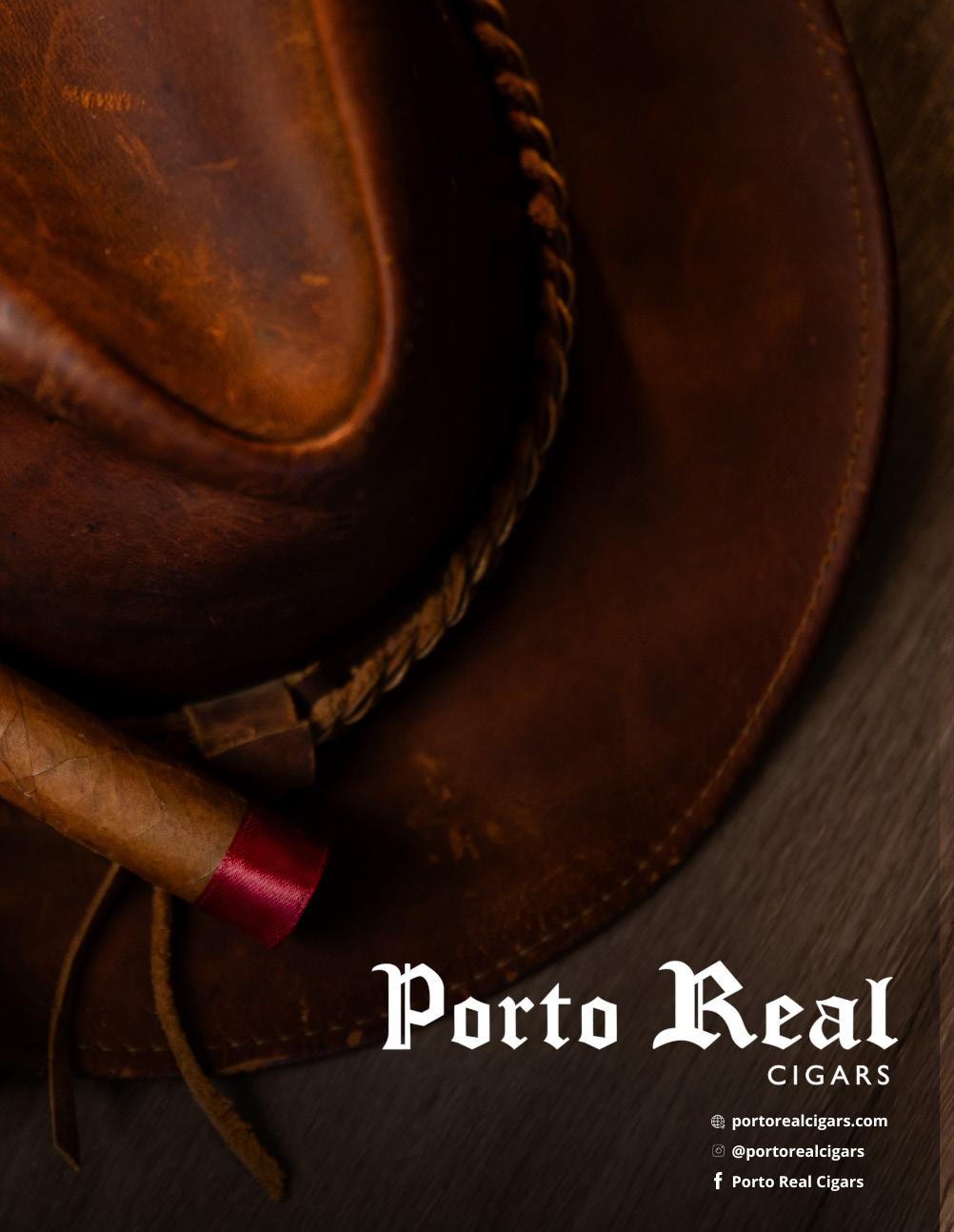









In 2017, Juana de la Cruz, Lisandro de la Cruz and John Deans were planning to partner within their own company. Five years later, heirs to a rich Dominican tobacco tradition, with military and aviation experience, this family decided to take flight and create what today is the very definition of a family business.
RAÚL MELO
César Salinas Chávez Director
Alberto Arizmendi Editorial Director
Roberto Pérez Santiago Art Director
Dominican Republic
Julio César Fuentes
Honduras
Patricia Pineda
Rolando Soto
Raúl Melo Publisher
Enrique Quijano Style Editor
Moisés Licea Web Master
Yoshua Segovia Community Manager
José Antonio Ruiz Tierraseca
Michel Iván Texier Verdugo
Diego Urdaneta Diamantes
Nicolás Valenzuela Voss
Argentina Gastón Banegas
Colombia
Federico Londoño Mesa
Eduardo Márquez
Canada
Nicolás Valenzuela Voss
Chile
Francisco Reusser
Christopher Sáez
Michel Iván Texier Verdugo
Humo Latino Magazine reserves the right to reject unsolicited articles that contravene its thematic profile, as well as those that do not conform to its style standards.
The articles received will be approved in the first instance by members of the Editorial Board. We reserve the right to make changes or introduce modifications to the manuscripts, for the sake
© All Rights Reserved. Grupo Humo Latino Any reproduction, total or partial, of this contents, by any process, is prohibited.
global.humolatino.com issuu.com/humolatino
Cuba
José Camilo López Valls
Spain
Luciano Quadrini
José Antonio Ruiz Tierraseca
Fernando Sanfiel
United States
Anastasia Psomiadi
Blanca Suárez Lefty Karropoulos
Mexico
Aurelio Contreras Manolo Santiago
Puerto Rico
José Luis Acosta
Dominican Republic
Francisco Matos Mancebo Wendell Rodríguez
Venezuela
José Bello
Diego Urdaneta
of better reading comprehension, without this implying changing their content.
The authors are responsible for the content published under their signature. Humo Latino Magazine does not assume any responsibility for possible conflicts arising from the authorship of the works and publication of the graphic material that accompanies them.
@humolatinoglobal info@humolatino.com
During the three years we have had the opportunity to learn more about this fascinating industry–especially within the Dominican Republic– one thing we’ve noticed is the abundant presence of family-owned businesses that either start with expansion dreams or continue the tradition passed down through generations.
This is the case of Madre Tierra Cigars, a truly family-run company formed by siblings Lisandro and Juana de la Cruz, along with Juana’s husband, John Deans. For the past few years, they have been driving their own brand, made in the Dominican Republic and distributed in the United States, with an extensive catalog that aims to conquer every palate.
The goal of this family, heirs to an important tobacco tradition, is to remain a family business and scale their project to the level of other renowned names within the industry, all while maintaining direct contact with their clientele, a strategy that sets them apart in a changing market with endless communication possibilities.
It is important to note that these family businesses have a background, a school from which their tobacco makers and master rollers emerged, large companies like Tabacalera de García, which, through the professional training of young talents during the period known as the Tobacco Boom, created the Grupo de Maestros, a team of master blenders responsible for designing the blends of Romeo y Julieta, Montecristo, or Vega Fina.
A consortium that reduced the distribution of Altadis, it is distinguished by turning young people into apprentices, apprentices into experts, and those experts into family, a story you will be able to learn about through the pages of the latest 2024 edition.
And in the same way, throughout these three years –and since May, speaking directly to the U.S. market–Grupo Humo Latino has also been focused on building a family, both with our customers, readers, friends, and partners.
We wish you a Merry Holiday Season and a prosperous New Year 2025.




Since 2017, the Sisters of the Leaf Global Movement (SGM) has been at the forefront of innovation, introducing tools and platforms that continue to break barriers and create opportunities for self-development for both women and men in the cigar industry.
The SGM Toolset offers the global cigar community –both individuals and organizations– resources for growth, connection, and transformation, ensuring they remain inspired, connected, and empowered to lead meaningful change.

This
Toolset is yours! Since 2017, we’ve motivated and empowered the cigar community, leading the way together –paving the path for remarkable initiatives that have inspired change in the U.S. and worldwide! Use the SOTL Global Movement Toolset! Let’s continue to shape the future and keep changing the game.”
Dr. Anastasia Psomiadi, founder of the SOTL Global Movement.

What’s in the SGM Toolset?
1. SGM Maestro School of Cigar Sommeliers
o The first online school for cigar aficionados and professionals, created in collaboration with Tobacconist University. Since December 2022, the curriculum has certified 49 sommeliers, helping them elevate their careers and passion to new heights.
→ Join today to transform your cigar journey!
2. The Voices of the SGM Alumni
o A global community for graduates to connect, share, and inspire. With 12 alumni interviews hosted in partnership with Humo Latino since June 2024, this platform inspires the next generation.
→ Share your story and empower knowledge!
o In collaboration with Humo Latino since March 2023, we’ve featured 78 contributions, including 52 interviews, 24 PCA related interviews, and 10 presentations of SGM articles and events.
→ Highlight your initiatives and achievements to empower the new wave of leaders!
o Since June 2023, this certification program has recognized 70 cigar destinations in the USA as welcoming spaces for women and men. Built on a three-year qualitative research project, this initiative reflects the voices, insights, and aspirations of women in the global cigar community. By 2025, the network will expand with 30+ global destinations, transforming how the cigar industry is perceived and ensuring it becomes more welcoming for all.
→ Get certified or nominate a lounge today!
o In partnership with Cigar Journal since 2021, we’ve highlighted Women-Friendly Lounges, SGM events, and aligned initiatives in both print and digital editions.
→ Feature your story or nominate your lounge to be showcased.
o Since 2019, we’ve hosted 11 “Changemakers” Roundtables, creating global dialogues to empower women, break stereotypes, and foster equality. Held in-person, digitally, and hybrid, these discussions inspire action and innovation.
→ Propose a topic or host a roundtable!
7. Rum Festivals with The Rum Lab & SGM
o Since January 2023, we’ve collaborated with The Rum Lab, offering free booths and VIP pairings at Rum Festivals across the USA. This collaboration connects brands with passionate audiences.
→ Promote your brand, products, or lounge at these exclusive events.
8. Local & Global Mentoring & Support
o Since 2017, SGM has mentored women and supported local, national, and global initiatives. Using its platforms, SGM amplifies voices and empowers communities to thrive.
For more information, visit www.sotlglobalmovement.com or email us at info@sotlglobalmovement.com.


Cigar Ambassador proudly announces the release of its introductory brand, Tobacco Queen. Cigar Ambassador has a twodecade trajectory. Established in 2005, the company has made its name in the international market, as a grower of premium tobacco, international cigar magazine publisher, cigar distributor and operator of high-end cigar lounges. Their first ever cigar brand pays homage to Queen Isabella and dedicated to Lily Wang aka The Tobacco Queen.
Queen Isabella and King Ferdinand, the first monarchs of Spain, financed Christopher Columbus’ expedition which would lead to the discovery of the new world. On this fateful trip, Columbus landed in what is now known as the Bahamas. The natives introduced him to these strange dried-up leaves; we now know them as tobacco. Lily Wang, like Queen Isabella, is a forward-thinking woman with a sharp vision. Lily broke into the tobacco industry against all odds.
Ausman Soriano Wang, director of Cigar Ambassador North America stated: “My mother Lily Wang is an inspiration to me. Born in China she was an unlikely candidate to do what she has accomplished in the cigar industry. In 2005 she left her career in finance and, along with her business partner Edward Jin, created a cigar magazine, cigar lounges, and cultivated a farm in the Dominican Republic which is now the largest producer of premium tobacco to the Asian market. This cigar, which is our first blend, is my gift to her in recognition of these amazing achievements.”
The Tobacco Queen brand is unique as each vitola has a slightly different blend. The blends were created at the Cigar Ambassador factory in Tamboril, Santiago, Dominican Republic.



-Tobacco Queen Robusto Wrapper: Ecuadorian Habano Rosado.
Binder: Dominican Criollo 98.
Filler: Nicaraguan Jalapa, Dominican Corojo. Vitola: 4.88 x 50.
-Tobacco Queen Lancero Wrapper: Ecuadorian Habano.
Binder: Dominican Corojo.
Filler: Nicaraguan Jalapa, Dominican Criollo 98. Vitola: 6.9 x 38.
-Tobacco Queen Salomon Wrapper: Ecuadorian Habano Rosado Maduro.
Binder: Dominican San Vicente.
Filler: Nicaraguan Jalapa, Dominican Corojo & Criollo 98. Vitola: 7.24 x 57
-Tobacco Queen Super A Wrapper: Ecuadorian Habano.
Binder: Dominican Corojo.
Filler: Nicaraguan Jalapa, Dominican Criollo 98 & HVA. Vitola: 9.25 x 48.






Cigar Ambassador was established in 2005 by Lily Wang and Edward Jin. A world leader in cultivating tobacco, it is the largest seller of raw premium tobacco to the Asian market. Based in the Dominican Republic, Cigar Ambassador proudly debuts its introductory cigar brand, the Tobacco Queen. Cigar Ambassador also publishes the popular Cigar Ambassador Cigar Magazine and operates two high end cigar lounges in Beijing and Shanghai.
For more information, visit on the web: www.cigarambassadorna.com Follow Cigar Ambassador on social media here:
Cigar Ambassador NA
Cigar Ambassador NA






During the last days of November, a project that had been dormant for over two years in the minds of those who make up Grupo Humo Latino finally came to light with the launch of Humo Latino Dominicana, the new print magazine of this company, born in Mexico, which has now established itself in the Dominican Republic to contribute to the development of the tobacco industry through quality articles and reports, but also with the corresponding fiscal obligations that contribute to the country’s economy.
According to the Group’s Director, César Salinas Chávez, this is a Spanishlanguage magazine made from, by and for Dominicans, with national distribution aimed at the domestic market, but thanks to the support of several partners, it will also reach select areas in Puerto Rico and the United States.
The predecessor of this product is Humo Latino Journal, a free newspaper that circulated in eleven countries such as the United States, Mexico, Spain, Argentina, Puerto Rico, and Honduras, which sparked the audience’s desire for it to transform into a magazine. “An idea that seemed as desirable as it was distant. Time, circumstances, and the support we found allowed us to achieve it.”
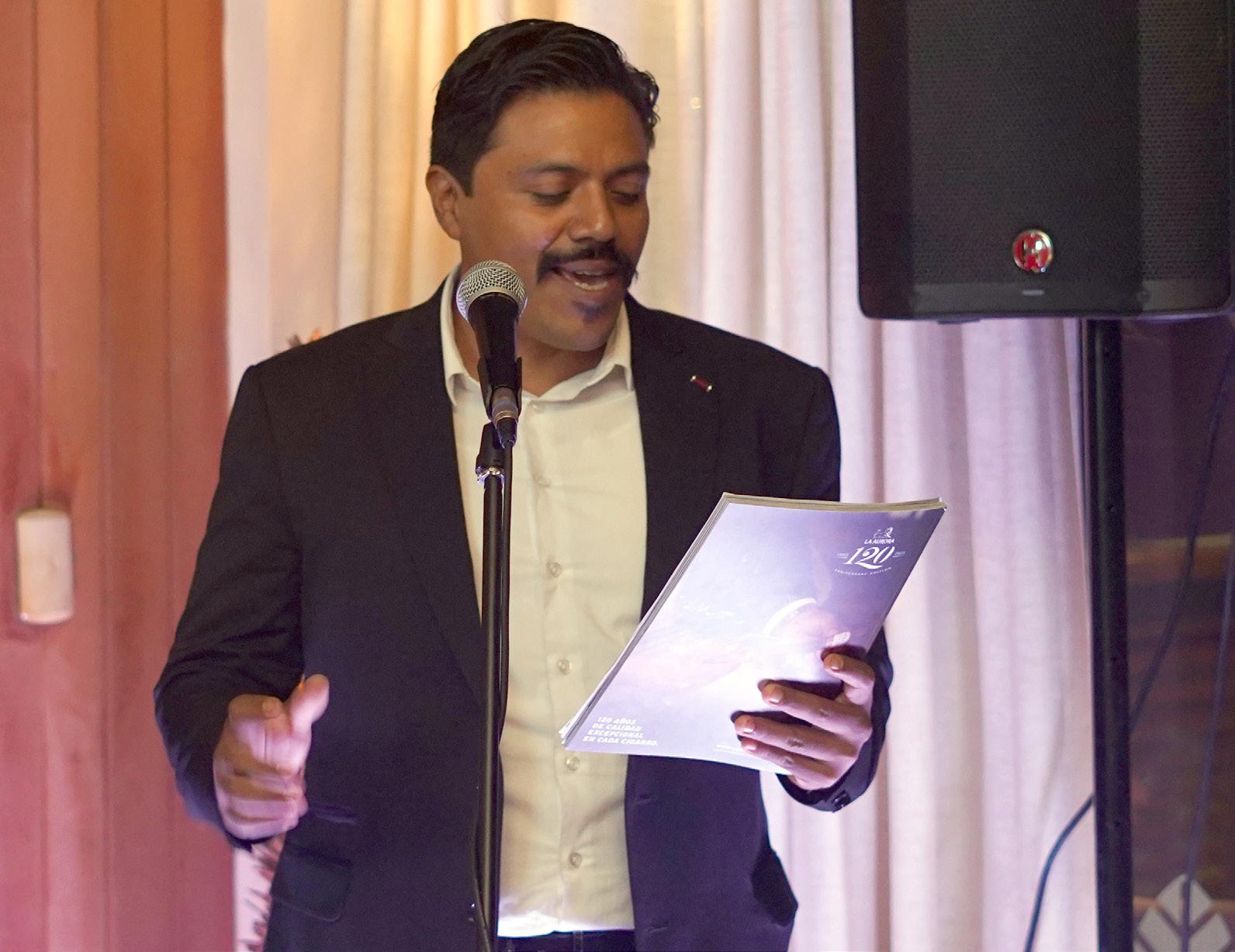






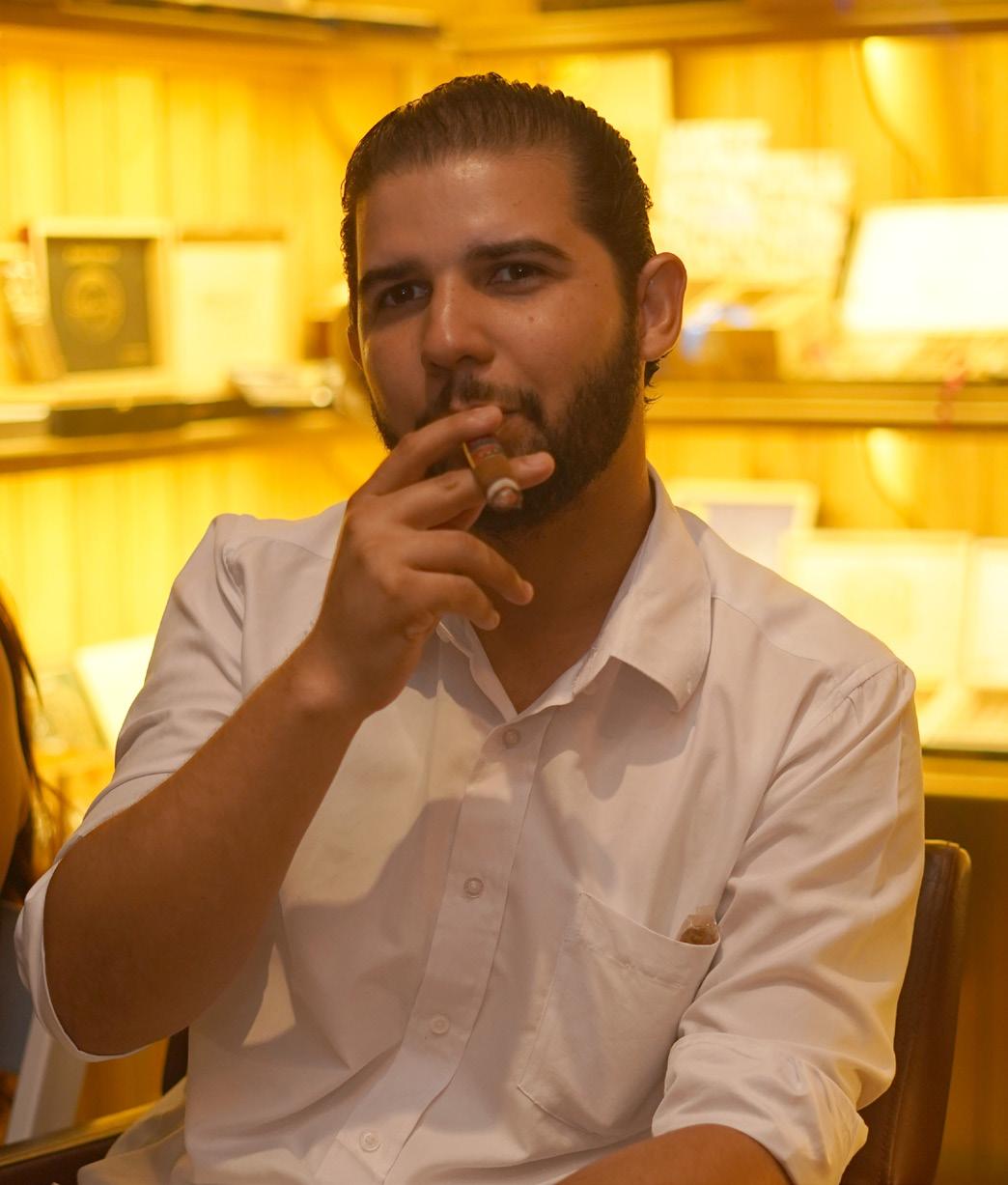






In this regard, César Salinas thanked each and every one of the clients, many of whom have now become friends, who made the creation of this magazine possible, which now adds to the editorial product catalog of Grupo Humo Latino.

He also emphasized that the choice of the Dominican Republic to launch this first edition of a print magazine responds to various positive circumstances, such as the culture, respect, belonging, admiration, and pride that Dominicans feel for their tobacco, their cigars, their tobacco growers, and their great industries, which have been a school for all and the origin of an unparalleled diversity of emerging and boutique brands.
These circumstances make the Dominican Republic a model for all tobacco and cigar-producing countries, turning these products into a national pride and the tobacco culture into a topic that extends across all areas of life.
For his part, Alberto Arizmendi, founding partner and Editorial Director of Grupo Humo Latino, explained that the interview with don Eladio Díaz, which formed the cover story for this first edition, had waited more than two years for the ideal moment to be published. That moment could not have been better than the presentation of the Humo Latino Dominicana magazine, in response to the importance of don Eladio and his history for the tobacco industry in this country.






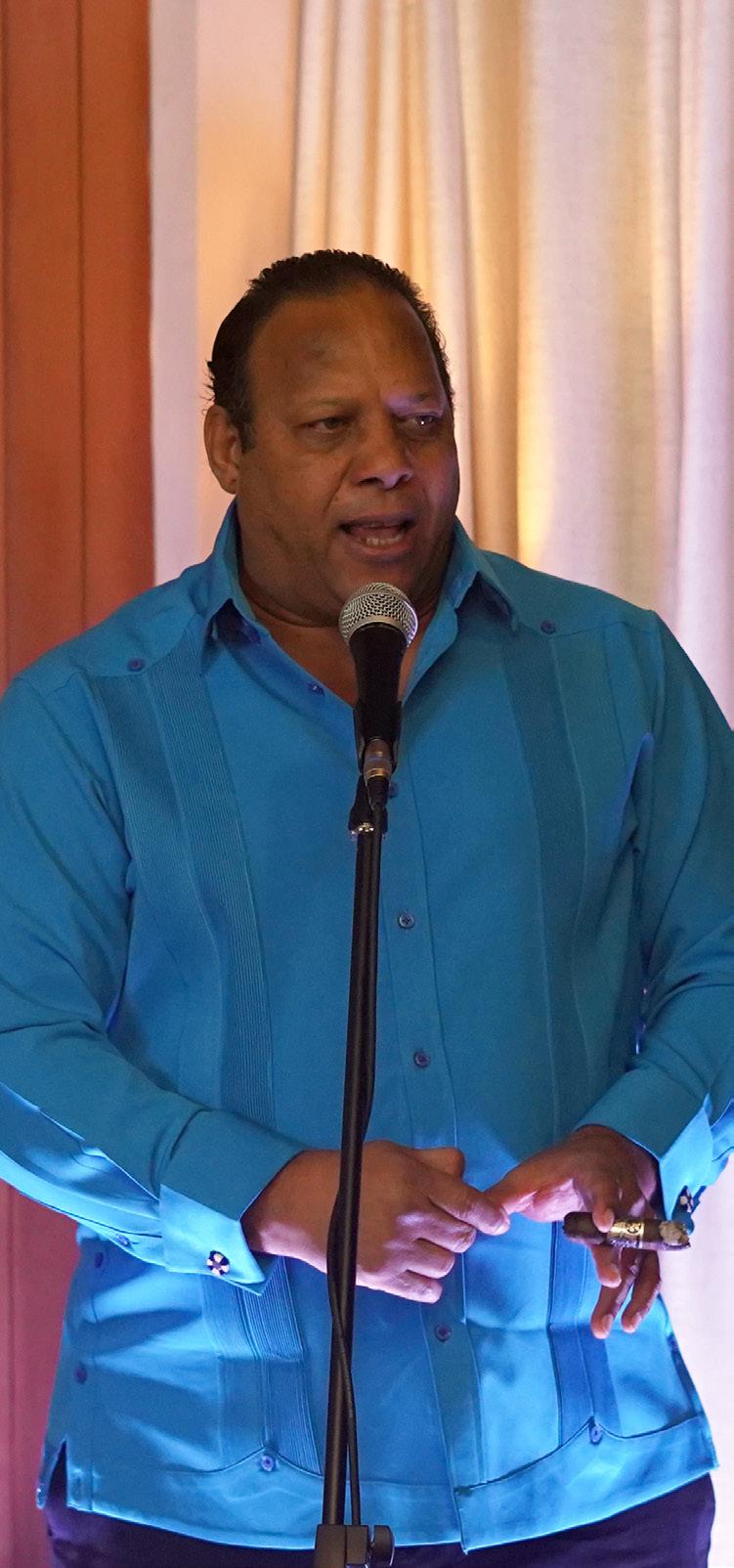
Finally, he referenced the formation of the company GHL República Dominicana, a project that took more than two years to shape and legalize, finally established in Santo Domingo, with the incorporation of Julio César Fuentes as a partner and Commercial Director.
With this company, Grupo Humo Latino seeks to simplify its advertising activities “and make our modest contribution to the country’s economy through the timely and correct payment of taxes.”
From the facilities of Tabaquería Cigar Club, don Eladio Díaz, one of the most distinguished Dominican master blenders, recognized and thanked the Group for providing a platform for local producers, which he described as yet another reason to continue working on improving the quality of Dominican tobacco and cigars.
Finally, the technical director of the Dominican Association of Cigars and Tobacco (Adocitab), Francisco Matos Mancebo, known in the industry as El Diputado del Tabaco (The Tobacco Congressman), pointed out that a product like this was needed in the country to reinforce the fact that Dominicans possess the best tobacco in the world.


Carlos Abreu, Tabaquería Cigar Club.
In this regard, he emphasized that this magazine is free, and it is up to Dominicans to place it where everyone can see it, with each copy serving to educate people about a product that is part of the national heritage.
“We needed to write the truth. From the moment we are born, we are told that smoking kills, and it’s necessary for us to stop turning our backs on a crop that is an inheritance from our ancestors, and educate ourselves just as each of us has educated our palates to enjoy the flavors of this cylinder called Dominican cigar.”
Furthermore, Carlos Abreu, owner of Tabaquería Cigar Club, the first lounge of Santiago, welcomed the creation of a magazine focused on the local market, which he considered to add value to the work developed over the years by the industry leaders present at the event, highlighting the presence of Radhamés Rodríguez, president of Adocitab, and Hendrik Henke Kelner, honorary president of ProCigar.




Also present were members of the Díaz Cabrera family, the executive president of ProCigar, Agustín Fernández García; the general director of the Dominican Institute for Quality (Indocal), Néstor Matos Ureña; Francina de la Cruz, representative of the Institute; as well as clients, partners, and friends of Grupo Humo Latino.
Accompanied by Benny Batista from Valdespina Cigars and Martín Cornelio from Cornelio Cigars, the celebration
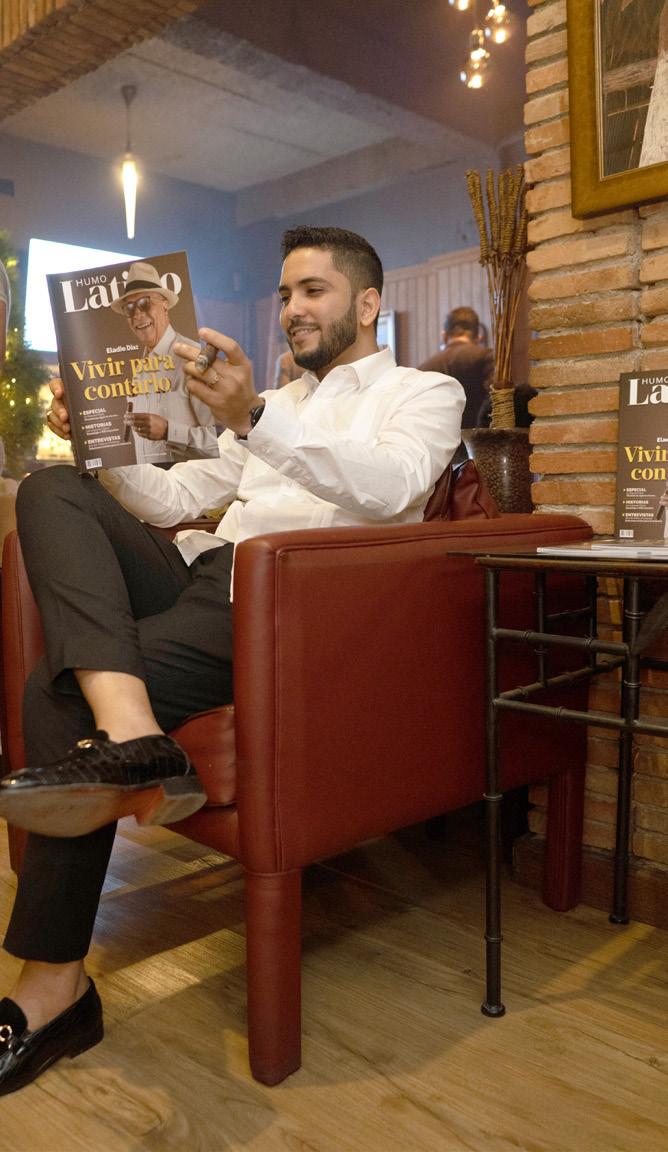
continued at La Recalada Cigar Lounge, at the Naval Officers’ Club of the Dominican Republic, in Santo Domingo, where a second presentation of the magazine was held, and the opportunity was taken to share cigars during a night among friends. The location was also named as one of the consultation points for this and future editions.
Finally, with Linga Cigars and Jonathan Almanzar as hosts, the celebration for this launch moved to Bhuké Cigar Lounge and Bar, where the gathering continued, now dedicated to clients in this region of the country.




*in alphabetical order


Anthony Garrillo Cigars, Maduro Strong Spirit
Wrapper: Habano Maduro
Binder: Sumatra
Filler: Criollo Dominicano, Piloto Cubano and Nicaragua
Sizes: Toro (6 x 60)

BIN Cigar, Boslucks Escuro 44
Wrapper: Broadleaf
Binder: Havana
Filler: Havana
Sizes: 4.4 x 44

Blackbird, Grackle Short Run*
Wrapper: San Andrés México
Binder: Ecuadorian
Filler: Dominican and Nicaraguan
Sizes: Toro (6 x 52)
*First Batch shipped to Tip Top Smoke in Springfield, Ohio

Diab Ellan, Reina Basura
Wrapper: Ecuadorian Maduro
Binder: Ecuadorian
Filler: The very best tobacco from Abuelo Sucio’s blend
Sizes: Magnum (6 x 60)

Flayva Cigars, Red Bone Berry*
Wrapper: Honduras
Binder: Dominican
Filler: Dominican and Nicaragua
Sizes: Toro (6 x 52)
*Infused, not soaked.

Las Lagunas, Torpedo
Wrapper: Corojo
Binder: HVA
Filler: Carbonell, Criollo 98 and Habano 92
Sizes: Torpedo (6 x 52)

Loaisiga, Infiel Sun Grown
Wrapper: Sun Grown Ecuador
Binder: Nicaragua
Filler: Nicaragua
Sizes: Torpedo (6 ½ x 54)

Nomos, Titan
Wrapper: San Andrés
Binder: Piloto Cubano and Ligero Dominicano
Filler: Cubano Ligero, Brazil and Criollo 98 Dominicano
Sizes: Robusto Gordo (5 x 64)

Platinum Nova Cigar, Champion
Wrapper: Habano 2000
Binder: Dominican
Filler: Dominican
Sizes: Football (5 x 70)

Valdespina, Black Knight Reserva Especial
Wrapper: San Andrés
Binder: Dominican
Filler: Dominican and Latakia
Sizes: Salomón (6 ¼ x 58)





In 2017, Juana de la Cruz, Lisandro de la Cruz and John Deans were planning to partner within their own company. Five years later, heirs to a rich Dominican tobacco tradition, with military and aviation experience, this family decided to take flight and create what today is the very definition of a family business.
Raúl Melo
Motivated by the market and a clear customer service strategy, Madre Tierra has experienced unmatched growth, with a catalog of seven regular line blends, one special brand, and an impressive array of projects yet to come. This shipment is heading steadily toward its goal: to bring the brand to the highest levels of the international tobacco industry.
John Deans is a former United States Air Force flight engineer with 22 years of service, retired as a mechanic for Delta Airlines, and now a tobacco enthusiast; but this wasn’t always the case.
Born in Ohio but raised in Florida, John’s only connection to the tobacco industry was chewing tobacco, until he met Juana de la Cruz and Lisandro, siblings from a Dominican family of tobacco growers with more than 50 years of experience.


In 2017, as John and Juana’s relationship was growing, Lisandro would often bring home bundles of cigars from a private production labeled LDC (Lisandro’s initials); soon enough, their house was filled with cigars, though the couple didn’t smoke.
During the Covid-19 lockdown, curiosity –fueled by boredom– led Juana and John to try one of the cigars filling their home, a moment that sparked their passion for premium tobacco.
Almost immediately, John reached out to Lisandro to share their decision to create a brand and introduce his creations to the U.S. market. Soon, they began crafting blends, hiring cigar rollers, and registering the brand in both countries.
Just two years ago, in 2022, the company launched its inaugural product, a Toro, 6 inches, 52 ring gauge, San Andrés wrapper, which was well-received by the market, marking a prosperous start in the tobacco industry, where family-owned brands hold a special place.
The cigars are made from a proprietary production, using tobacco harvested from the De la Cruz family farms in the Dominican Republic and Ecuador. Each cigar is produced at their own factory in Tamboril, Santiago de los Caballeros, the World Cigar Capital.
In the Deans’ home, they still have a bundle of the initial cigars as a testament to the company’s beginnings and a treasured legacy for future generations. “Lisandro doesn’t know we still have them, I always say that whenever he visits, I lock them up in the safe,” John jokes.
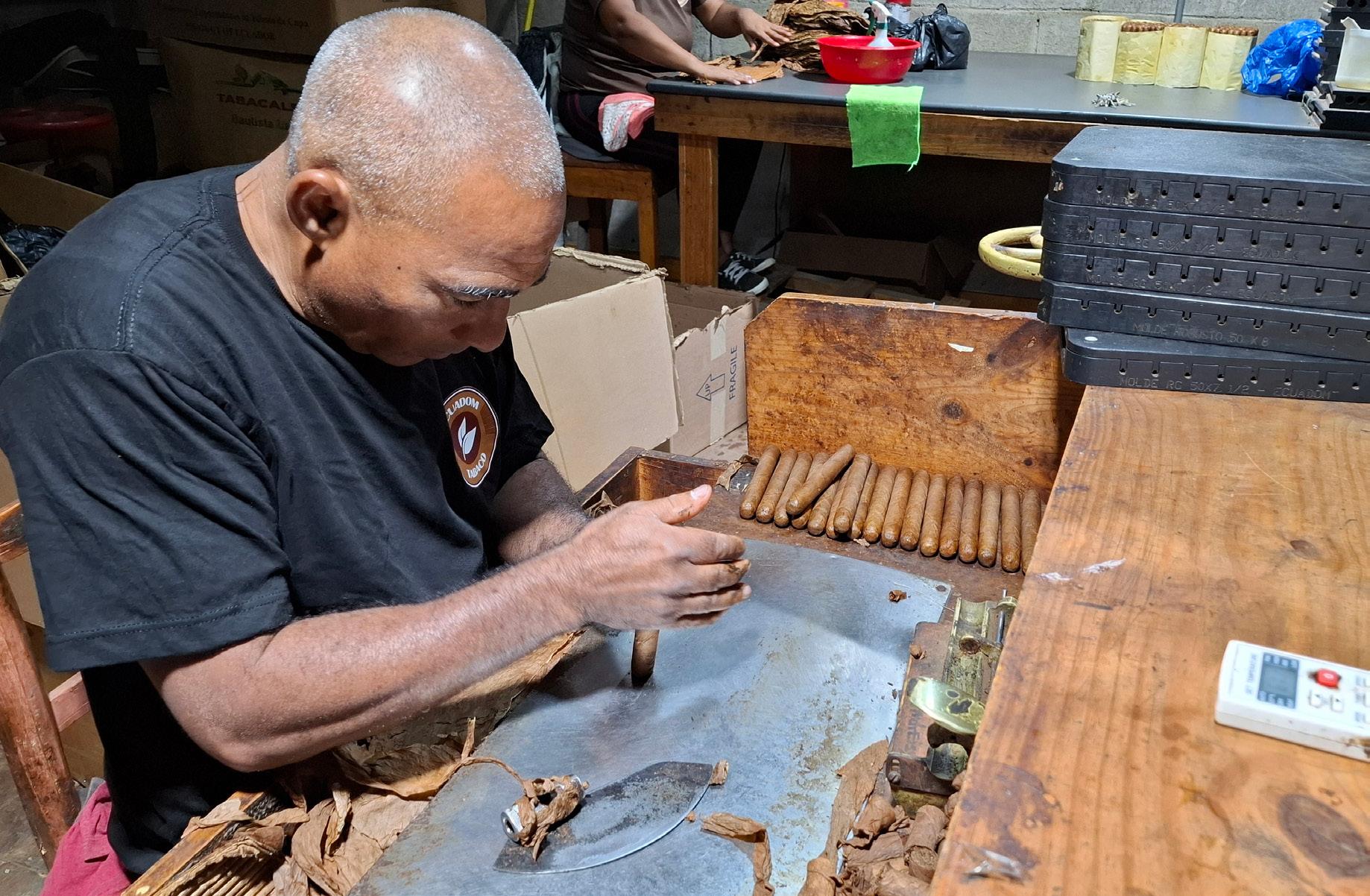
During our video interview, John recalls the first event they attended as a brand: a fundraiser for children undergoing cancer treatment, where attendees came to him with dozens of questions about cigars, a moment for which he was unprepared. “People would come to me with so many questions I didn’t have answers to. I thought a cigar was just a cigar, nothing more. That night, I spent about $300 on calls to the Dominican Republic with Lisandro to get his advice,” he shares.
That night, the Madre Tierra San Andrés was a total success, and John’s passion for tobacco was ignited. Rather than being discouraged by his inability to answer customer questions, the experience motivated him to study and learn about
tobacco, even traveling to the Dominican Republic to experience the field processes firsthand, learning to strip leaves, roll cigars, harvest, and even place the bands. “I needed to know how things were done to answer the questions,” he adds.
Meanwhile, in the U.S., Juana de la Cruz is a stylist, but her family has been producing tobacco for a long time. She learned to roll perritos, the rustic cigars her family sold in their own store. “We sold up to three thousand pieces. The 12 children of one of my grandmothers knew how to make them and never stopped producing,” she remembers.
Juanna lived in New York for a time before moving to Florida, and during every trip back to Santo Domingo, she would visit the factory to stay close to her tradition. During those visits, the idea to create her own brand emerged, thanks to her brother’s suggestion.
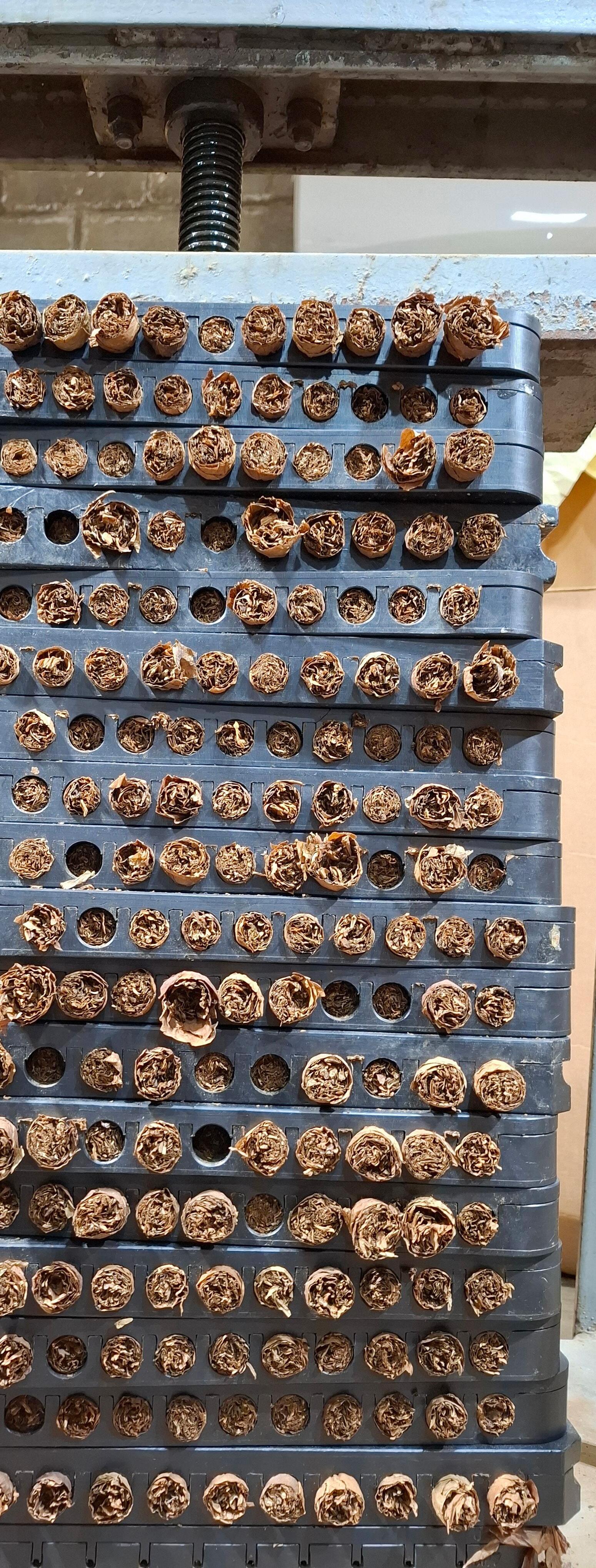
As part of John’s retirement benefits, Juana would travel two to three times a month to her homeland, facilitating coordination with Lisandro to bring the brand to life.
Lisandro de la Cruz is in charge of production, with industry experience dating back to 1982, and he is the creator of all the current blends, except for the Habano, which was created by one of the factory’s master rollers as an idea that surprised them.
According to John, Lisandro is a very particular, precise, organized, and perfectionist person, qualities that contribute to the brand’s and company’s success.
Two years after its launch, Madre Tierra has established itself as a small company within the industry, with the goal of growing and positioning itself internationally, relying primarily on highquality blends and a unique customer service strategy.
“We are a company of just four people, which makes some processes difficult,” they acknowledge. This situation does not interfere with their desire to attend every event to interact closely with people, without neglecting marketing.
“And here’s where the advantage comes in, because when you call any other company, sometimes you speak with Juan, then Betty, and the next time Susan; but with us, it’s different, you always talk to me, and that makes a difference, the customers love it,” John asserts.
Aware that launching a wide range of blends is not recommended, Madre Tierra’s debut in the premium cigar industry received the market’s endorsement, and just two years into existence, the brand’s catalog now includes seven regular line blends, all in a Toro format, 6 inches, 52 ring gauge, with Connecticut, Rosado, Habano, San Andrés, Pennsylvania Broadleaf, Corojo, and Cameroon wrappers, as well as La Fuma Ricardo, a 6-inch, 50 ring gauge short filler cigar with an Habano Ecuador wrapper and Dominican binder, named in honor of Rick Kellerman, a widely recognized podcaster in the industry.
Thus, Madre Tierra offers a cigar for every palate, with blends to satisfy those looking for a strong smoke to those preferring something milder. “Lisandro always experiences tension with each
new launch, but fortunately, each blend has been a success, one after another,” they state.
For a brand to grow, identifying weaknesses and turning them into opportunities is essential. In this regard, Madre Tierra has set out to modernize its website madretierracigars.com to make it an efficient sales tool, along with the business deals that Juana and John can close personally.
For these entrepreneurs, the journey into the premium tobacco industry has been quite an adventure, but they are convinced that maintaining this closeness with their customers is what sets them apart, keeps them in demand, and will help them achieve their future goals.
“We recently won a contract among 50 other companies to supply a chain of clubs with 19 locations across the U.S., and this is just the beginning,” they assert.



With eight cigars successfully introduced to the market, Madre Tierra will pause on creating new blends without halting their progress within the industry.
According to John, the next step is to produce other sizes, such as the Magnum, 6 inches, 60 ring gauge, a cigar not suitable for everyone, which will only be made in Habano, Broadleaf, and possibly Corojo blends.
This format will be joined by some Torpedos and a Short version of La Fuma Ricardo to meet the needs of clients who prefer a quick smoke, something they can enjoy during breaks, lunch, or before returning to their hotel room.
For the partners, the journey has been tough, but they remain firm in their roadmap toward manufacturing a million cigars a year, a goal they hope to reach by 2025. “We’re not even close now, but the projections are big, and La Fuma Ricardo will be a key driver of this goal,” they say.
It’s only been two or three weeks since the fruits started to come in consistently, but Madre Tierra is already embarking on its next adventure by hiring more staff to help meet the numbers they’re targeting.
An example of this is the first order of La Fuma Ricardo, a shipment of five thousand cigars that hasn’t even arrived in the U.S. yet, but is already sold out. “That was the success of the samples we distributed, we had to call Lisandro to order another five or ten thousand cigars,” they highlight.
Additionally, John shares that, by next summer, Juana will travel to the Dominican Republic with the sole aim of designing her own cigar. She will work with the blenders and rollers, name it, band it, and do everything necessary to create a personal cigar.
Two or three months later, John will do the same, followed by Jacob. “The goal is to have a personal line to enjoy and gift to friends, nothing more. I want a Lancero, it’s hard to sell in the U.S., but I like it, and it will be for me,” he explains.

In addition to being a mechanic for Delta Airlines, John is a U.S. Air Force veteran, having served as a flight engineer for a Lockheed C-141 Starlifter, a cargo plane, with 15 combat missions completed in various countries; while Jacob Senior, a sales collaborator and friend, served as a PJ (Pararescue), a unit specialized in search, rescue, and combat trauma.
The background of both partners gives Madre Tierra a special connection with veteran organizations in the United States, most notably the Concerned Veterans for America (CVA), a foundation that works with former military personnel to ensure they receive adequate income and healthcare after leaving military service.
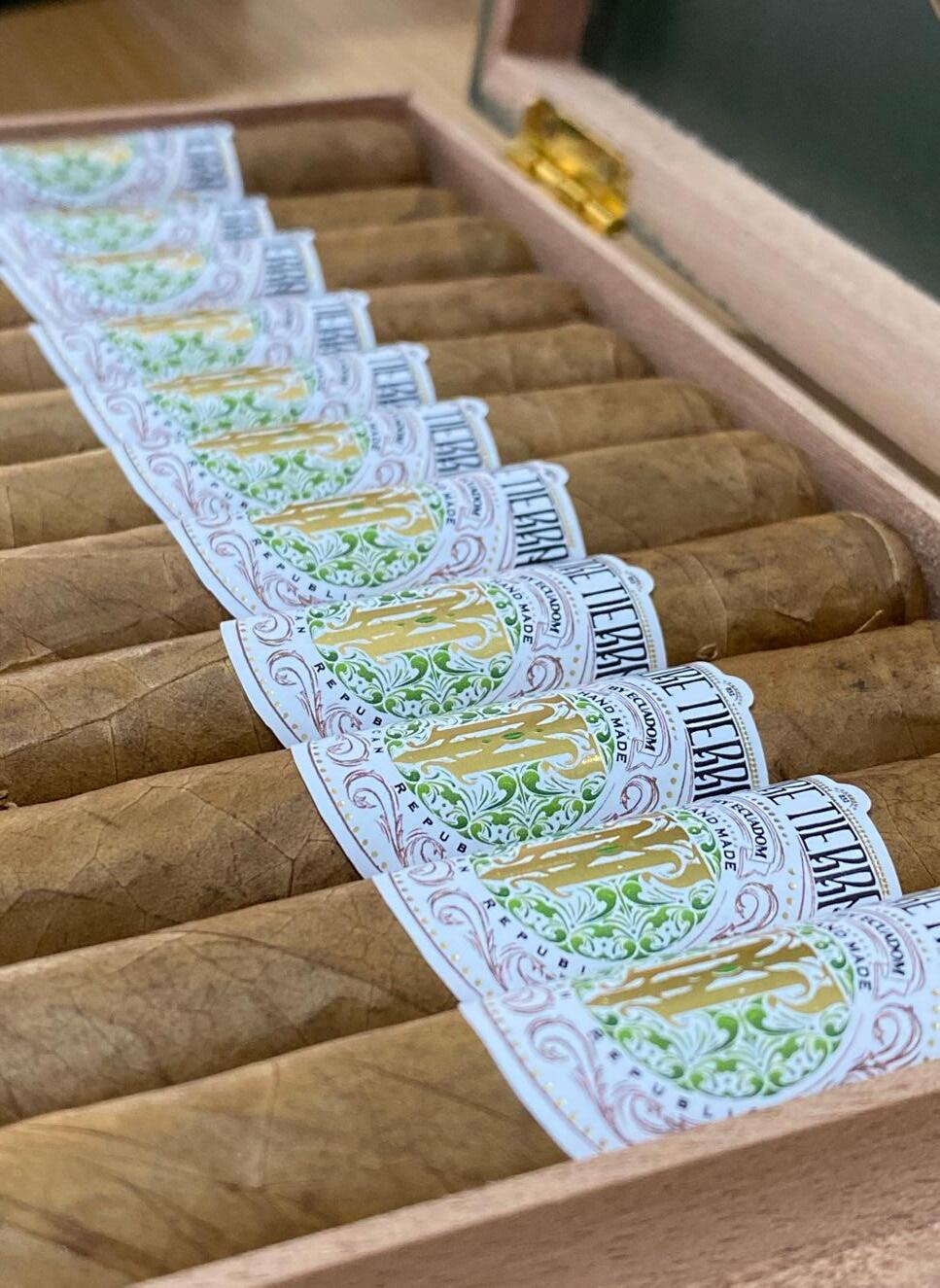
Every month, the company donates 100 cigars for veterans and sends various shipments to deployed troops around the world. This is their way of addressing social and health issues related to military life and deployment.
“There are many family problems, posttraumatic stress, or health issues due to amputations that veterans face upon returning to civilian life. Smoking a cigar allows you to disconnect from the world for an hour, relax, and not worry about anything else. And that’s how we try to help.”


In a simple way, La Fuma Ricardo is a cigar born from the need to offer an affordable, high-quality product capable of competing with tobaccos from Nicaragua and Honduras, which generally have a lower cost than those produced in the Dominican Republic.
But the story of this cigar goes beyond that. It managed to captivate the palates of the Cigar Hacks, an influential podcast with seven years in the premium tobacco industry. According to John, the members of the show have a very particular palate, which is difficult to satisfy.

John recalls taking the cigar to the location where the podcast is recorded, usually in a tobacco shop, sharing it with the hosts, and receiving extremely positive feedback.
“Jokingly, after the show ended, Nurse Rick asked what the cigar would be called, and Juana suggested it would be a good idea to name it in his honor. He didn’t believe it was real, but we did it because he is a very well-known person in the industry, and the fact that he agreed to let us use his name and join us in this venture was very important for our story,” John shares.
La Fuma Ricardo is a short filler cigar that has surprised a market that generally doesn’t trust this type of tobacco due to the weakness of its ash. “But the construction of this cigar is so good that you can achieve about 2 to 2.5 inches of ash, and people can’t believe it,” they say.
Rick Kellerman, also known as Nurse Rick, is a 63-year-old certified psychiatric nurse based in northern Boston. He has been a smoker for 30 years and a podcaster for seven, accompanied by a group of enthusiasts known as the Hacks, a term used to describe someone inexperienced or lacking in skill.
The main mission of the Cigar Hacks podcast is to promote local tobacco consumption by encouraging listeners to buy cigars in-person from their local tobacconists, instead of online.

Drawn to Florida’s good weather, Rick and his wife often travel there during the winter, taking the opportunity to visit their daughter, who lives in the city. Naturally, he also visits local cigar shops, one of which is where he met Juana and John.
According to Nurse Rick, the original name for the cigar was very similar to a couple of existing brands, presenting an issue with copyright. “It was a shame it didn’t have a name because it was an excellent cigar, so I jokingly suggested they name it after me, but in Spanish: Ricardo,” he recalls.


While there are slight variations in the versions of the story, one thing remains clear: the cigar’s flavor delights everyone who tries it, and when this quality is combined with Nurse Rick’s influence in the premium tobacco community, the result can only be successful.
“I’m just an average guy, nothing more, so I feel very honored, grateful, and even amused to have this cigar,” he expressed during our phone call.

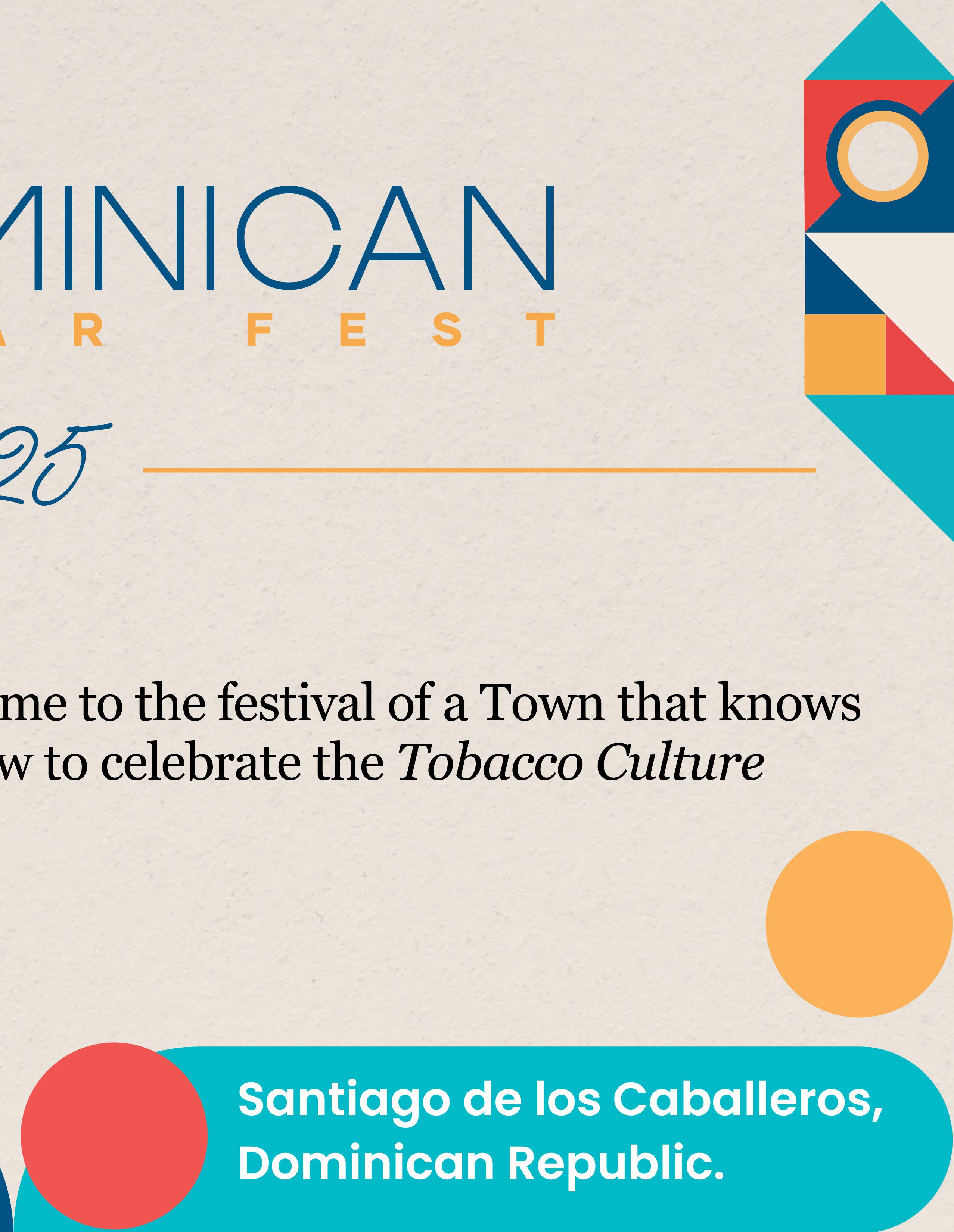
Headed by PhD
Anastasia Psomiadi
-expert in ethical and responsible entrepreneurship; active for a long time in the international field-, the SOTL Global Movement creates a positive change in the Cigar World, breaking stereotypes in search of creating a better world, inspired by the love for people and cigars.
From its establishment in Greece, in 2017, its objective is to empower women, inspire them and create opportunities

for them to raise their voices; motivate them to create cigar communities, support their entrepreneurial spirit and - in collaboration with mendevelop a better environment for aficionados.
The Advisory Council and Management Team works tirelessly to lead the organization toward success, promoting projects such as the Maestro School of Cigar Sommelier Tobacconist, in collaboration with the Tobacco University: the Women Friendly Cigar Lounge
Certification, in support of small businesswomen, and Global Round Tables to facilitate discussion and equal dialogue between aficionados. Also, the Global Movement Cigar Speakeasy online tutoring with Detra Denise, a space to enjoy smoking cigars and dispel worries, so as a Scientific Research in Social Psychology with Panteion University, on the Contribution of Cigars in Social Health, based on the senses, the emotions, the connection, bonding, selfidentification and its social value.
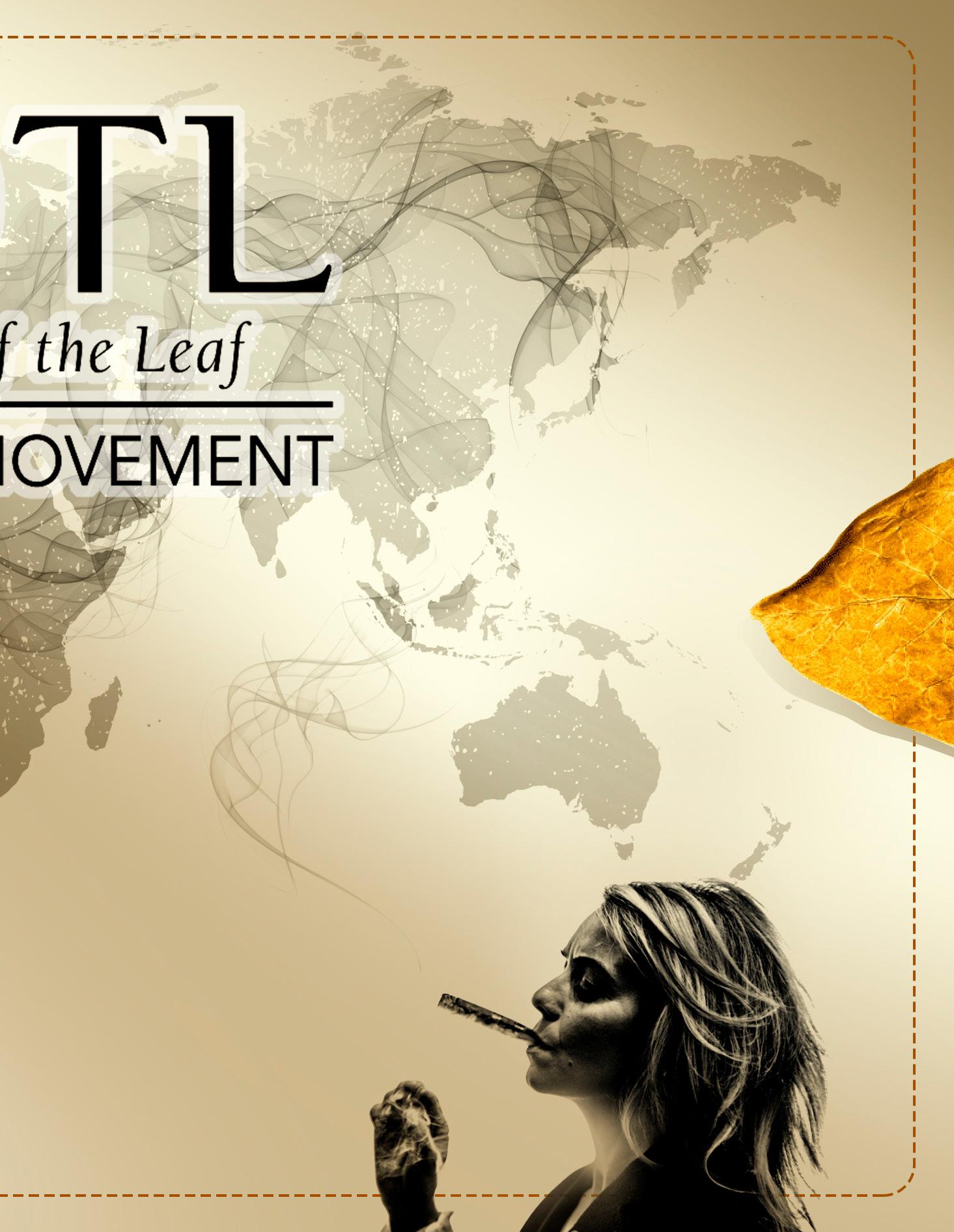
Educate people of all genders about the history, culture and craftsmanship of cigar making, promoting awareness of the benefits to health and enjoyment of smoking, will allow future generations to preserve the tobacco industry, if we encourage them the same sense of community.
Be part of the Movement!


The mission of the alumni from the Global SOTL Movement's Certified Cigar Master Sommeliers School is to foster a community by providing a platform for networking, knowledge sharing, and professional development.
This network allows them to connect with other cigar enthusiasts, as well as to meet and engage globally through the platform: https://www. sotlglobalmovement.com/sgmsommeliers
In addition to networking opportunities, SGM –in collaboration with Humo Latino– presents brief profiles of certified sommeliers, available in both Spanish and English, to spread the experience and passion of the graduates, who serve as inspiration for aspiring sommeliers.
Every two months, SGM organizes virtual tastings and exclusive networking events for alumni, featuring a special guest, and will provide the cigar to be tasted, if available in their country.

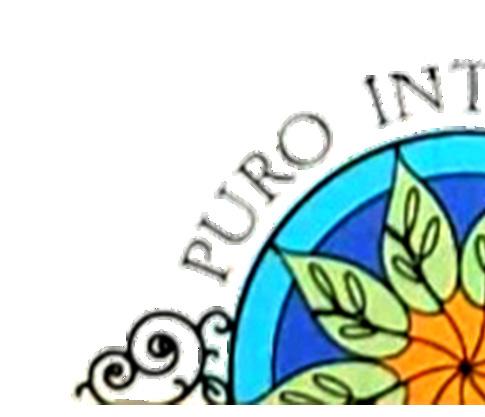




These meetings include guest speakers such as cigar brand owners, Master Blenders, and experts in various aspects of the tobacco culture. This gives alumni the chance to sample different cigars and learn about their origins, flavors, and pairing options, all from the comfort of their homes.
At the same time, it provides a space for graduates to connect, share experiences, and build relationships in a relaxed and enjoyable environment. Join the Global SOTL Movement to promote the value of the Sommelier Course and let’s continue to elevate, together, the knowledge for the appreciation of cigars!
Kathy is 62 years old and lives in New Carlisle, Ohio, United States, where she works as the Senior Financial Manager for the LAIRCM Project for the Air Force, a military defense tool, while dedicating her free time to enjoying fine cigars.
Beyond her professional activity, she is a curious person when it comes to premium tobacco, always seeking an opportunity to socialize and discuss about cigars. “I live in a small town, but I enjoy going out to smoke on the porch and answering people’s questions about what I’m smoking at that moment.”

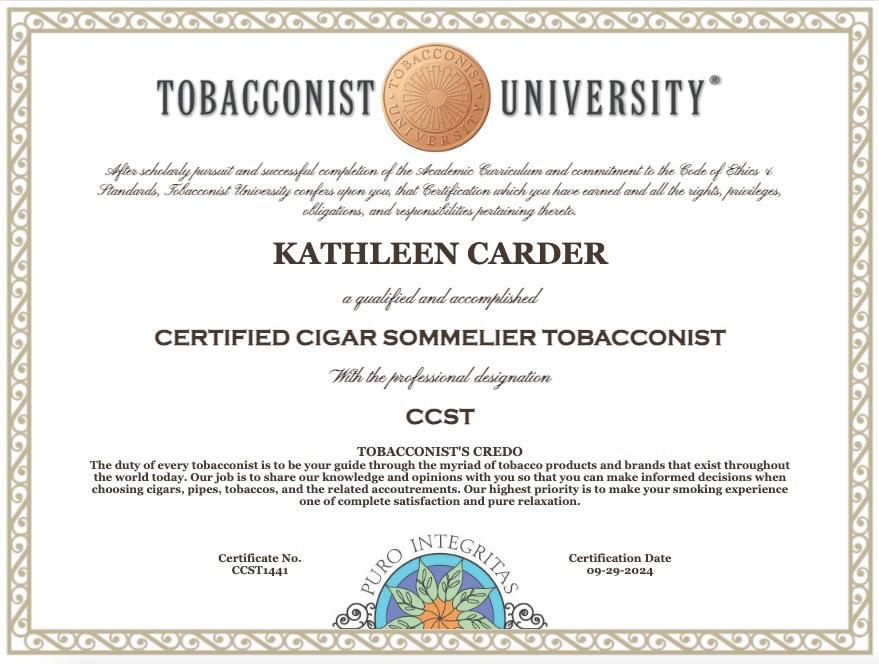



This passion for tobacco knowledge led her to join the educational program of the SOTL Global Movement, aiming to better prepare herself for personal growth and to help others select cigars for themselves or as gifts.
Although she already knew some topics, through this course as a Certified Cigar Sommelier, she learned about the leaves, their cultivation, selection, and construction, as well as how to choose a cigar based on each person’s palate.
“I now feel more confident when talking to other aficionados. Before taking the course, I would sit down to enjoy my cigar and just listen. It’s hard to participate in the discussion if you don’t have the knowledge.”


At 57 years old, Elaine is a prominent figure in the revenue management world, and since 2023, she has been the Director of Sales and Marketing for the Tampa Cigar Week, where she found social media to be the perfect platform for education and connection around premium tobacco.


According to her, Baltimore County, Maryland, where she lives, hosts a wide variety of cigar-related events, each representing a unique opportunity to connect with other enthusiasts, explore a broad range of tobaccos, and enjoy the camaraderie that defines the community.
Elaine’s main reason for becoming a Certified Cigar Sommelier was to expand her knowledge and create a space that connects and builds networks, empowering and educating women who are new to the world of premium tobacco. “By sharing my knowledge, my goal was to make the cigar world more accessible
and welcoming to other women, fostering a community of support and shared passion.”
Being a busy woman, the program offered by the SOTL Global Movement was a great experience due to its flexible, selfpaced structure, allowing her to balance learning with other commitments.
Now, after her graduation, she has applied the knowledge she gained in practical activities, from teaching others how to cut and light a cigar to educating them about blends and flavor profiles.

Psychologist, certified behavior analyst specializing in the autism spectrum, and now Certified Cigar Sommelier, Bobby Newman is a 57-year-old enthusiast who has just begun to get professionally involved in the tobacco world.
Motivated by the desire to learn more about the history and nuances of a hobby he has enjoyed for 30 years, Bobby decided to enroll in the SOTL certification course, from which he gained a deeper understanding of the product and how to help others find what they would truly enjoy.



Currently, the only official activity he engages in is writing a column about books and cigars for the Not Gentlemanly Cigar Smokers website, while also serving as the unofficial sommelier for his circle, advising people about purchasing gifts for friends and loved ones. “I hope to get more involved as an owner or partner in a lounge once I retire professionally,” he notes.
For his work, Bobby often travels across the country and around the world, but his residence is in Long Beach, NY, where, during a fundraising event for the Make a Wish Foundation, he received a Perla del Mar cigar from JC Newman, handed to him by Bobby Newman, through whom Bobby is known within the premium tobacco industry as “the other Bobby Newman.”


Joshua and Rebecca Scarver
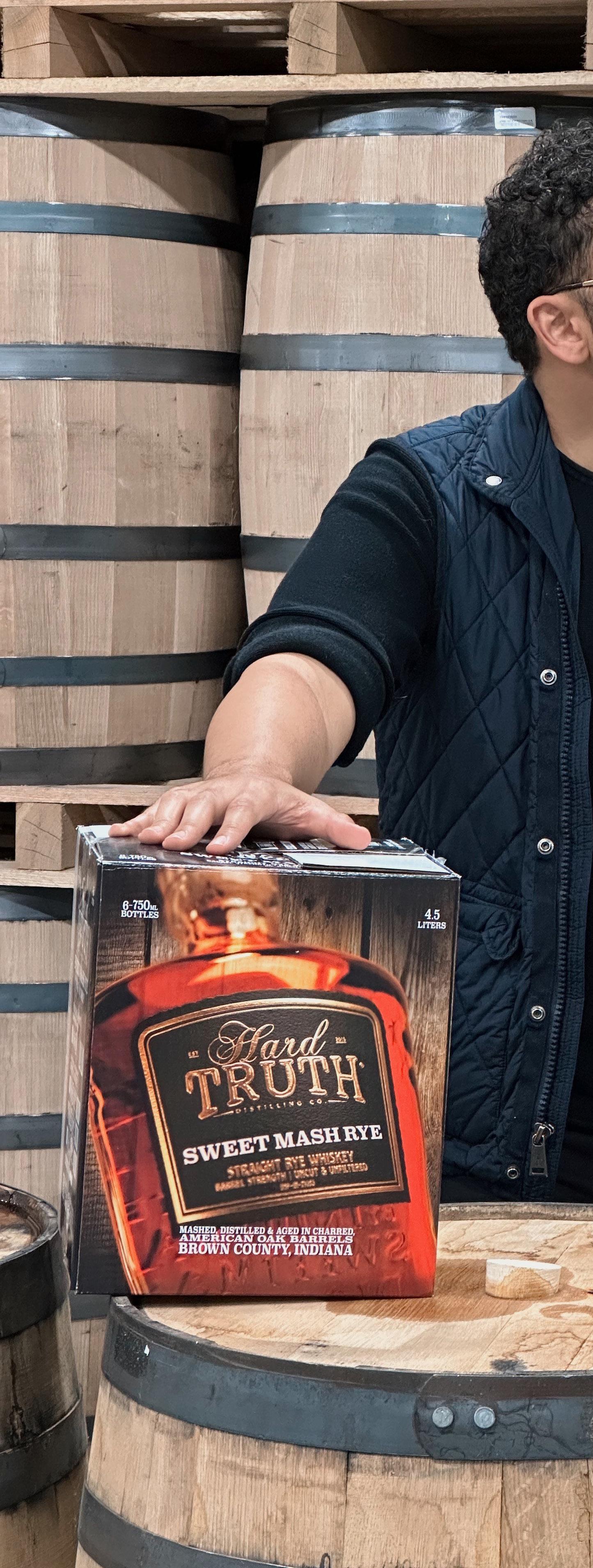

Joshua and Rebecca Scarver, beyond being a happily married couple, are also business partners and life allies in their mission to improve the community they live in. They fulfill this mission through a virtual space for reviewing cigars and spirits, as cigars brokers, and leading the #DoWhatYouDesire Gives association, through which they organize collections to purchase toys and books for the Milwaukee Child Defense Center.
Josh began his career in business through music, an environment where cigars and whiskey appeared to him as a very particular lifestyle. “It was something elegant and sophisticated that attracted me when I saw artists like Jay-Z and Suge Knight smoking them on their album covers,” he recalls.
As for Bekah, she grew up in the family business of distributing professional beauty supplies, gaining the necessary experience during those years to navigate any other field within sales.
Beyond their relationship as a couple, the chemistry between Josh and Bekah naturally led to a business partnership. When Josh expressed an interest in premium cigars, the first idea was to visit the nearest lounge to learn about the industry and the experience it offers. “It was an interest we could both participate in together, having date nights where he smoked, and I could enjoy a cocktail, which eventually sparked an interest in bourbon as well.”
In addition to their work in the cigar world, Bekah’s interests include horseback riding, gardening, studying climate and soil conditions, crop rotation, and other agronomy topics closely tied to the tobacco production process from seed to classification as wrapper, binder, and filler, making the industry particularly fascinating to her.




A tobacco enthusiast since the age of 16, Josh has studied a wide range of brands, attended countless events and festivals, and tasted various types of whiskey. For the past 4 years, he has shared his knowledge with around ten thousand followers on his Instagram account (joshuascarver), discussing this spirit and its pairing with cigars. “I consider myself a connector of brands and an information sharer. It’s something that also helps me sell more.”
Josh’s early journey in the cigar world was self-taught, without prior work for someone else, training, or support from a professional. It was a process of trial and error. “I follow the old adage of treating people as you would like to be treated, with respect and honesty.”




Based on this personal ideology, Josh and Bekah devote part of their time to the #DoWhatYouDesire Gives association, where they raise funds to purchase toys and books for the Milwaukee Child Defense Center.
According to Bekah, the charity began during the years when Josh was in the music industry, initially collecting used books in good condition and new toys.
When he transitioned to a new industry, the organization remained, but instead of collecting items, they created a fund to collect monetary donations that can only be used to buy toys, books, clothing, health items, blankets, or anything directly used by the children they serve.
“I don’t think there was a specific inspiration, just the desire to bring positive change to the children in our city. Possibly being the voice of those who don’t have one,” they both agree.
Finally, this couple affirms that their partnership, in addition to being loving, is entrepreneurial, keeping them passionate about building, growing, and learning about every aspect of the cigar industry.
“We hope to continue traveling and making connections through a good drink and an excellent smoking experience.”


Sarah Donvito
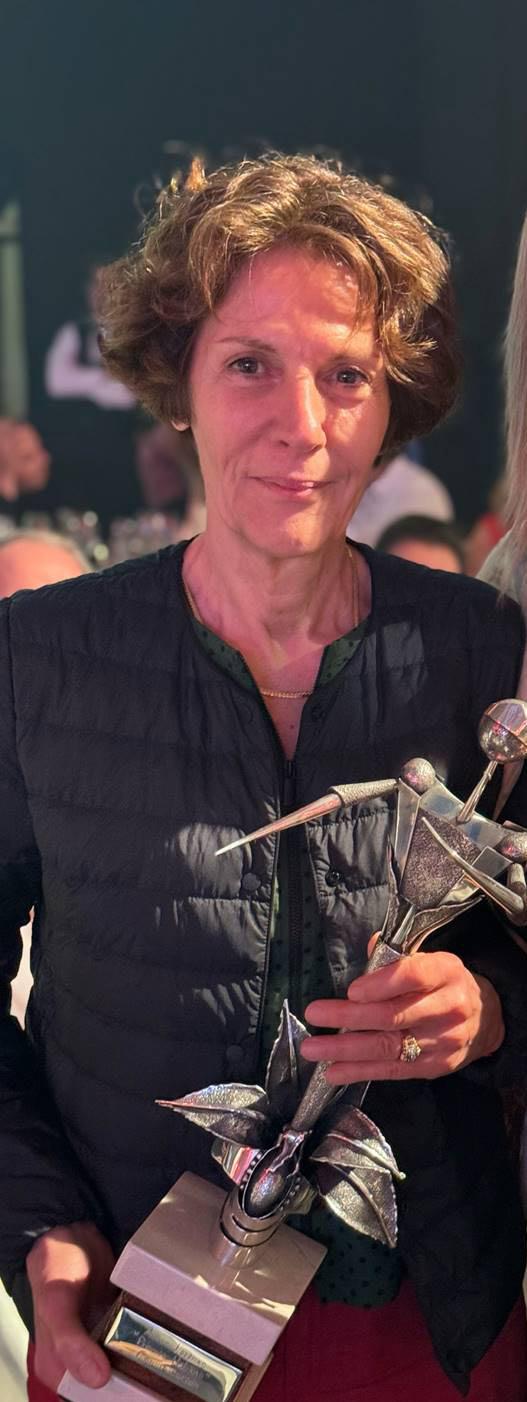

Originally from Bari, a city located next to the crystalclear sea of Puglia, Italy, Sarah Donvito is a mother, former criminal lawyer, and former university professor, who left her life in courtrooms and classrooms to fully dedicate herself to creativity on social media and the enjoyment of habanos.
As the daughter of a tobacco enthusiast, Sarah’s first encounter with premium tobacco –specifically habanos– was around the age of 16 when her curiosity about these “beautiful foreign artifacts” led her to secretly take one and try it. “Of course, I inhaled it and felt terrible!” she recalls with laughter, while also remembering the time when her father showed her the correct way to enjoy them. “And I fell in love with them,” she states.

In addition to working as a Social Media Manager and Event Planner professionally, Sarah also serves as one of the five official influencers for Habanos S.A., president of the Terra di Bari Cigar Club, and board member of the Habanos Club Italy. Both organizations are key players in Italy’s tobacco and slow-smoking scene, with a mission to spread the necessary information and knowledge to fully appreciate the benefits this style of cigar consumption can offer.
According to Sarah, although Italy’s tobacco tradition dates back to the early 19th century with the Kentucky variety imported from the United States, there are unfortunately numerous restrictions that prevent people from fully enjoying tobacco, not to mention the taboos surrounding women smokers. “If I smoke a cigar in a public place, people look at me in surprise, as if a woman couldn’t enjoy a good cigar.”


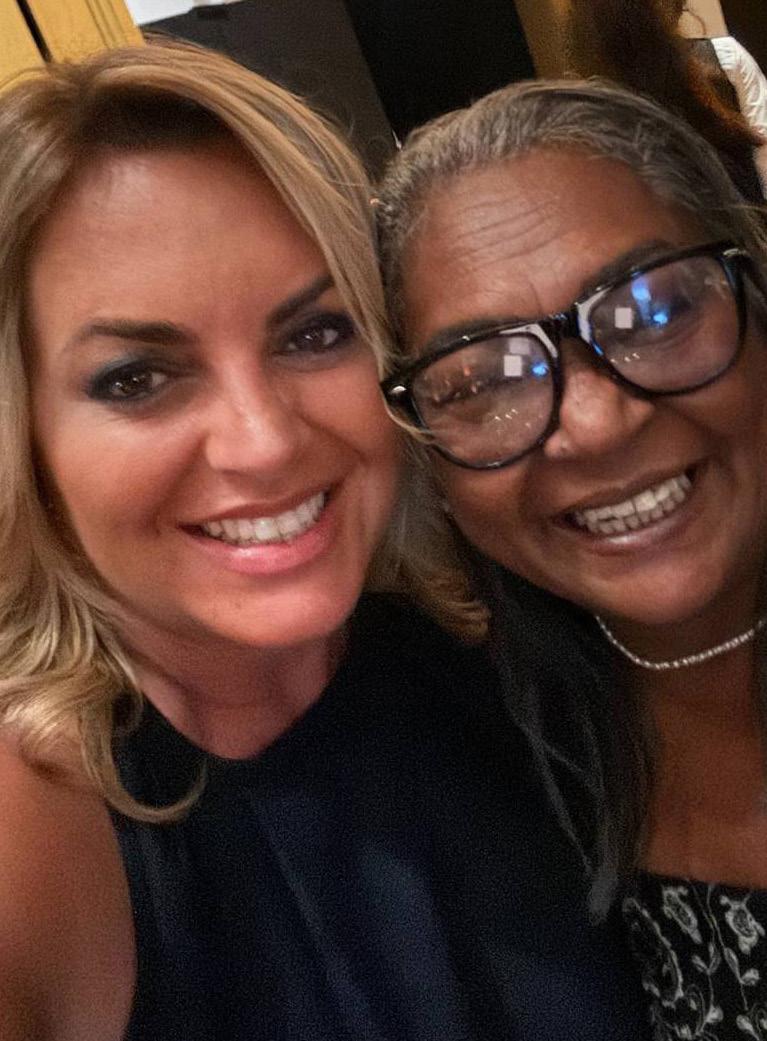

This is the situation that organizations like Terra di Bari Cigar Club and Habanos Club Italy are working to improve, supported by a clear global shift in paradigms, where Sarah highlights the role of women within the premium cigar industry.
As an example, she mentions Maritza Carrillo González, co-president of Habanos S.A.; Annie Lorenzo, editor of L’Amateur de Cigare and Mujer Habano 2023; and Jemma Freeman, president of the English distributor Hunters & Frankau. “These are just a few of the women holding important positions in the industry, and I am convinced that many more women will stand out in this sector.”
In this regard, Sarah believes that the SOTL Global Movement has already made great strides in bringing together the leading female figures in the tobacco world. “It would be wonderful if we could organize a traveling event in all countries to involve and gather as many Sisters of the Leaf as possible!”

Sarah Donvito is the administrator of SigariMag on Instagram and Habanos Only, La Confrérie du Cigare, and other Facebook groups, seeing these platforms as a useful way to bring together enthusiasts from all over the world, with whom she shares and spreads the cigar culture, especially after the isolation period caused by the Covid-19 pandemic.

Part of Sarah’s mission on social media is to ensure accurate information is available and to keep cigar aficionados constantly updated on events, courses, and new cigar releases. She also proposes interesting pairings and covers a wide range of topics and activities to engage them as much as possible.
Furthermore, she stands out as the only woman among the five official influencers of Habanos S.A., a responsibility that
requires her to be very careful with every post, especially when it comes to transmitting knowledge about cigar preparation, lighting, and production processes.
“For a woman, the line between being elegant and falling into vulgarity is very thin. Elegance and refinement are the foundation of my social activity, especially when I have to describe my #MyHabanosMoment.”



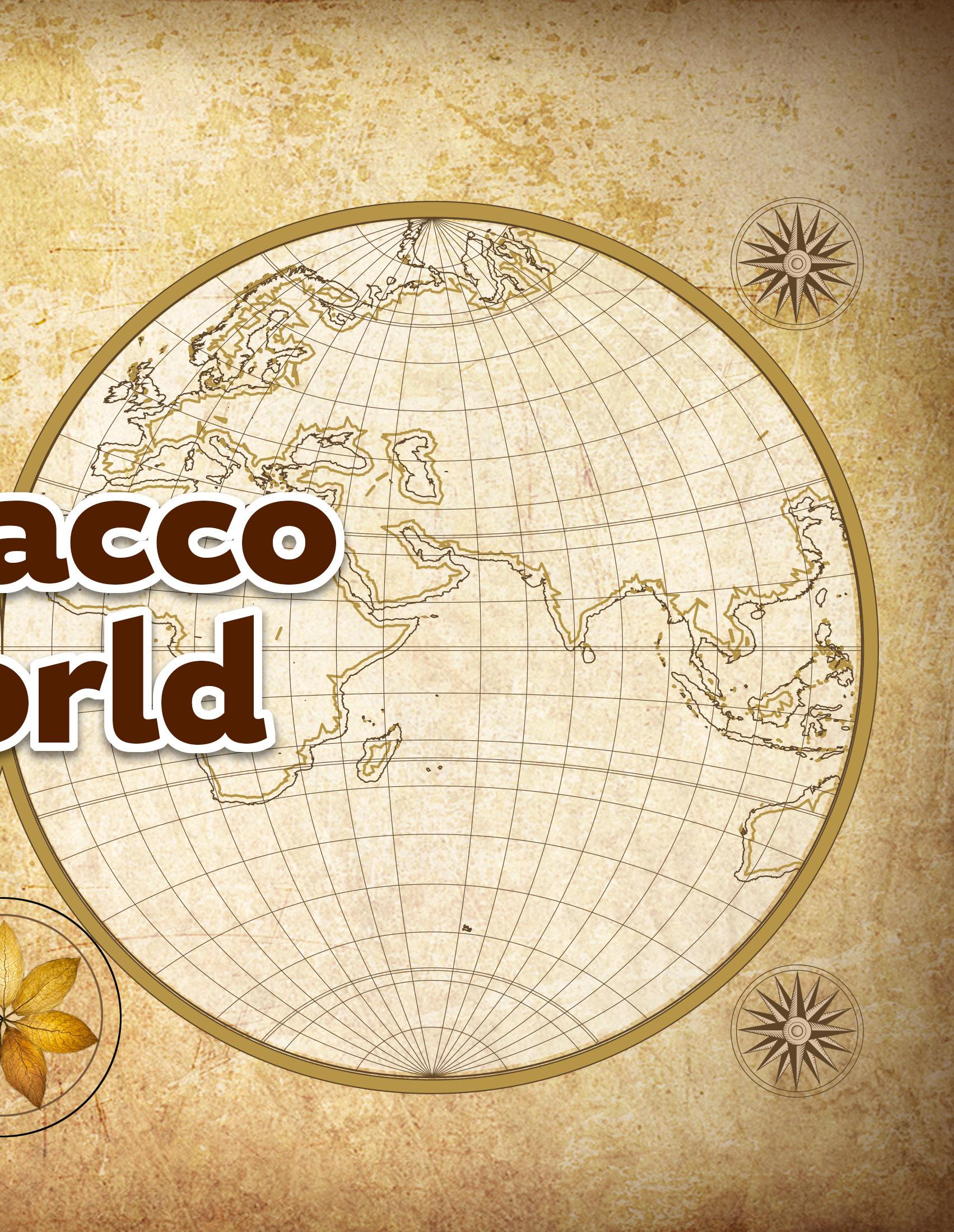
A PERSON, A CHARACTER, A FRIEND
I sacrifice myself daily for my personal and spiritual growth. I don’t want to be someone else, I want to be myself”


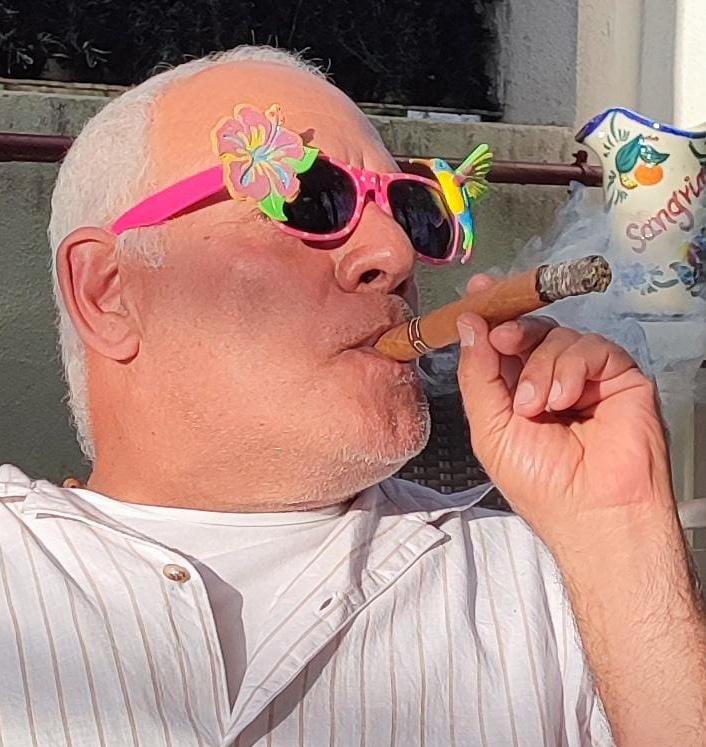
Fernando Sanfiel
Ihave a habit, almost a self-imposed obligation, of personally meet those people we contact through social media. Now, my instinct tells me that this person has something more, much more.
My story with Rigoberto begins with the contact of a friend. He was the one who pointed me toward a character who immediately caught my attention: Rigoberto Carceller.
“He captivated me from the first conversation with this phrase: ‘It is the mark of a good person to be grateful.’”
He is cultured and fond of quotes and phrases full of meaning. As if in each sentence, he wants to make you reflect on life, the good life, and the search for inner peace.
Rigoberto is a cartographer. He arrived in Spain in 1993 at the age of 29, thanks to efforts made by Manuel Fraga, the Spanish and Galician minister. Because of this, upon arriving in Spain, he settled in Pontevedra (Galicia). Today, he lives in Madrid and is a sommelier.
But I don’t want to get lost in an easy narrative of compiling data and résumé quotes that, by the way, are already on the internet. Because the Rigoberto of today is nothing like that past. In a simple enumeration of his long history as a political activist, I am left with this reflection:
“Since I am so committed to my neighbors and citizens, I always got into trouble. I couldn’t see an injustice and just stand by or look the other way. I always got involved in all the messes, and I was arrested many times.” Another problem in Cuba is “speaking your mind.” “And since I can’t lie and I’m very critical, more problems.”
“I don’t make artificial smiles”
The Indiano in La Palma Island has a special meaning. In fact, the third Monday of February is celebrated (within the winter festivities or Carnivals) as the Fiesta de los Indianos.
The psychotavern El Patio del Indiano –as he defines it– and the wine culture were the birthplace of El Capellán de las Indias.
El Patio del Indiano is a space for cultural events, concerts, academic presentations, tastings, and pairings. And all those things that always make us feel magnificent and transport us to another dimension of good living.

“My Patio, psychotavern, I manage it day by day. I don’t make plans. There are always artists and different people from the cultural or academic fields who propose things to me. I live off my work and I don’t have ambitions. I have projects. Today, I will enjoy what I’m going to take with me.”
This feeling makes me agree to meet, and I travel to Madrid for a live encounter, to see each other and look into each other’s eyes. If he had already conveyed to me –in our video calls– his calm, tranquility, vision, and experience of moments that must have been hard to bear, to live, now it was even stronger. Always offering a positive take, a philosophical quote to remember and keep growing, personally and spiritually.
An exercise only a few know how to do. The live conversation feels too short, and we both agree that we will need more time to enjoy moments and cigars.
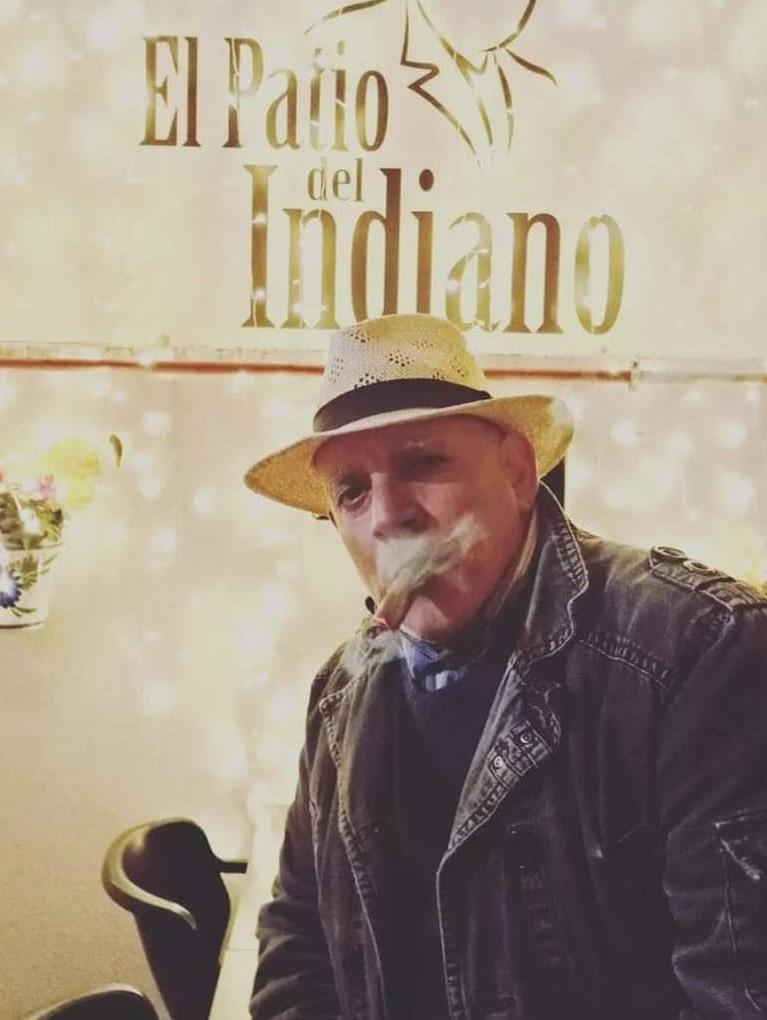
“The wise man forms himself”
Rigoberto is culture, he is spectacle, and above all, he is the one who creates the good moments. From the start, he makes the visitor feel enveloped in his aura of carefree joy, shared happiness. There is an overwhelming desire in the air to make you have a moment of fun, a break from constraints, where the main rule is not to be boring or “bring problems.”
“Choosing friendships wisely and knowing how to detect superficiality are the foundation of my life today.”
His welcome ritual is a Cuban Santería custom; starting with a greeting that has much to do with tobacco: “It is about blowing the smoke towards the companion to attract good spirits.”

Smoking by the book or smoking freely. “These moments are what we take with us from this life.”
Tobacco brought us together, and it was the bonding agent that moved us to enjoy each other’s company. I smoke cigars to have a good time, whether alone or with company, and Rigoberto:
“I first started smoking cigars at 18 with my father. I seek very personal and spiritual moments to be with myself, although most of the time I like to smoke with friends. It’s an excuse to share a relaxed, deep conversation and enjoy affinities with friends.” “But above all, I smoke for pleasure, I smoke to feel free. I don’t share the smoking of trivialities or ostentation of smoking cigars. For me, it’s more of a spiritual act, whether alone or with friends.”
Smoking invites us to stop time and enjoy spaces. Spaces that are increasingly restricted, so when you manage to be in a space with no restrictions to smoke, you unlock all the muses of the soul. Whether alone or with company.




In the Tobacco World, talking about Cuba means talking about the Canary Islands. And talking about the Canary Islands means talking about Cuba.
A Cuban cigar, Hoyo de Monterrey Serie Le Hoyo Robusto, versus a Canarian cigar, Un Gran Toro from La Rica Hoja Tabaco.
The conversation lasted two short hours, which barely allowed us to review the evolution of the tobacco that accompanies us. Pedro diving deep into the soul, letting the cigar just be a complement, something we didn’t pay much attention to because Hoyo de Monterrey and La Rica Hoja share common roots and “don’t disagree,” they complement each other.
Clearly, this conversation wasn’t about tobacco; it was just an excuse to get to know each other better and compare Cubans and islanders, but as people: I notice that the Cubans here on my island have a very acceptable cultural level.
Rigoberto: “60% of Cubans come from European, Spanish culture. And 40% are black and were slaves, now low-level workers.”
Time flew by, and we’ll let the next time be the one where tobacco occupies our thoughts. This time, I take with me a piece of a warrior’s heart and a clean, loving soul, full of love for others. A friend of friends, open like an abandoned prison, where walking through each corner of the old building tells you a lot and evokes memories. Memories that today bring only good things.
“My life is marked by the search for truth and justice.”
“You are reborn with wounds, that sets the rhythm of my life.”
Good smokes and “I no longer defend illusions. I’m tired of unfulfilled promises.”




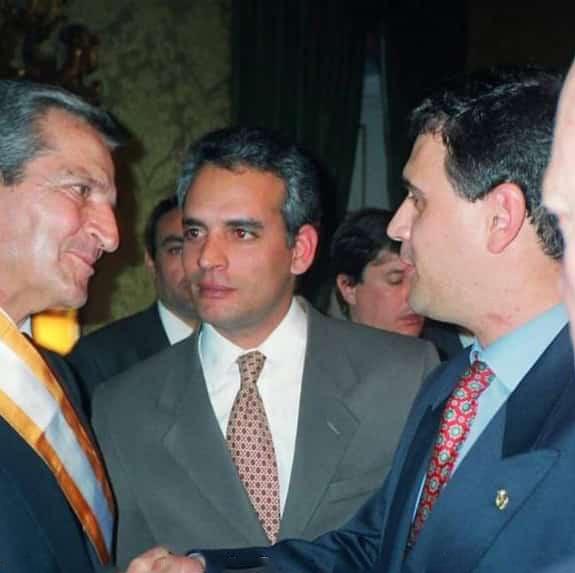
“I owe my liberation to the Cuban church. A Cuban bishop friend. When Felipe González was in power in Spain, he was more of a friar than a bishop. Due to his austere life and dedication to seeking good for others.
He handled the arrangements for me to be ‘freed’ since, in reality, I was deported or ‘invited to leave Cuba.’ They used the most visceral and infallible blackmail: to meet with my family and make them realize that all my troubles were dragging them down too and that the best thing was for me to leave Cuba. Because I never wanted to leave, and my intention was to keep fighting against injustices.”
He has a wife, Idamis, three sons, and a daughter. He married her in a Cuban prison, bypassing obstacles. When he entered for a visit, along with his fiancée, there was also a priest.
“I told her: we’re getting married today. I had arranged the ceremony with a priest friend, and we took two passersby who happened to be there at the moment as witnesses.”



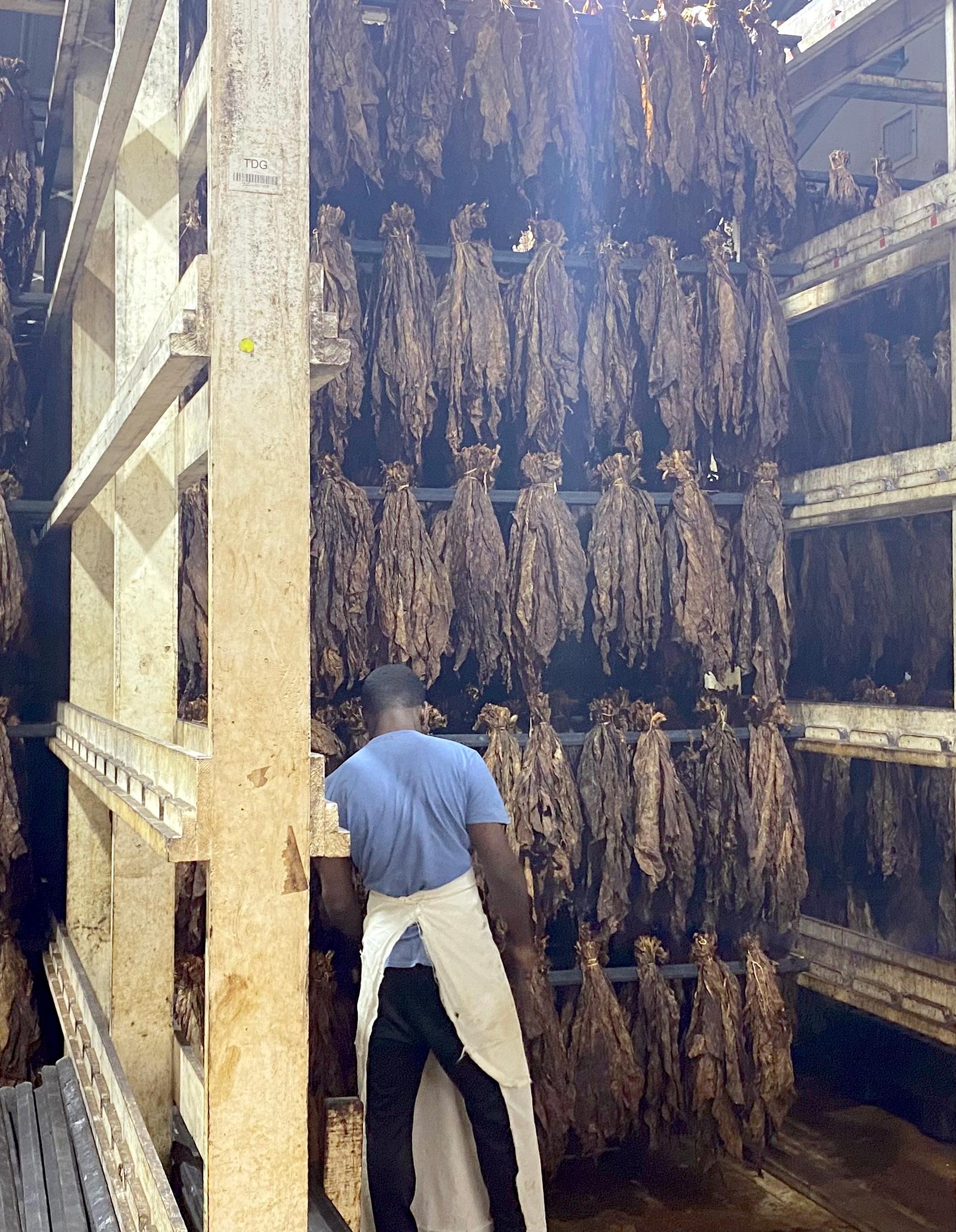
Aurelio Contreras Moreno
Tabacalera de García, based in La Romana, Dominican Republic, is internationally recognized for the high quality of the tobacco in its cigars, making it the largest premium cigar factory in the world thanks to its numerous top-tier blends and over five thousand employees.
Tabacalera manages four main premium lines: Montecristo, the most prestigious, with the Clásico, Platinum, White, Monte by Montecristo, and Montecristo Epic lines.
They also have the Romeo y Julieta line, which is the highest-volume brand: 1875, Reserva Real, Romeo by Romeo y Julieta, and VegaFina, the company’s most international brand, which has experienced rapid growth, from producing 600,000 cigars annually to 12 million today.


Another of their brands is H. Upmann, with lines like Reserve, Grupo de Maestros, The Banker, aimed at the U.S. market. They have also just launched the Romeo y Julieta Book of Love, a limited edition.
One key to Tabacalera de García’s success is the work of a group of top-tier master blenders, responsible for creating new blends and overseeing production processes.
Founded in the early ‘90s by Don José Seijas, a member of the Cigar Hall of Fame, this team, also known as the
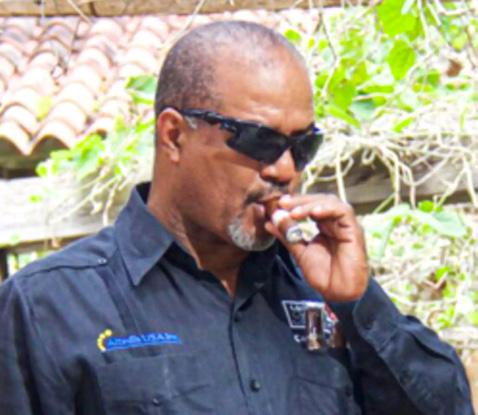




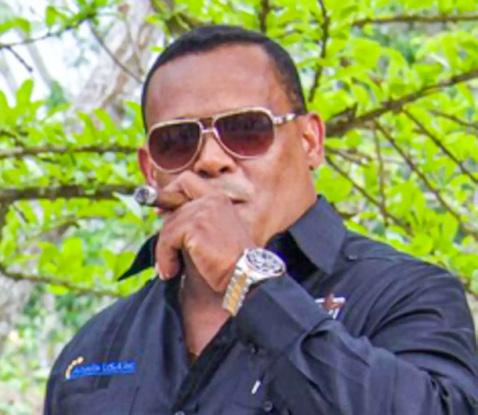




blending team, initially made up of Javier Elmúdesi, Pedro Ventura, Carlos Travieso, Víctor Ávila, Néstor Rodríguez, Cándido Rosario, Elmer Suárez, and Joel Alvarenga, is called the Grupo de Maestros (Masters Group). They certainly live up to the name.
Two of them, Javier Elmúdesi and Pedro Ventura, shared their experience, work philosophy, and what drives them to stay at the top of the international blending game with Humo Latino Magazine.

Pedro Ventura, currently the Operations Director of Tabacalera de García, is originally from La Romana. He has always been connected to the agricultural sector, first through sugarcane and later with tobacco.
His father taught him the importance of taking care of the land to ensure that crops reach the expected levels and being responsible for the tasks assigned. “I would say they are a fundamental part of my upbringing and what I am today.”
He studied Computing at the Universidad Central del Este, and just five months after graduating, he began working at Tabacalera de García, the only large factory in La Romana and the only place he has worked for just over 26 years.

His first contact with tobacco was through a friend, Giovani Honorio Cuevas, who gifted him his first cigar. “I say that from the moment I smoked it, I was hooked on this world. It was a splendid Dunhill, a huge cigar, and I smoked it down to the nub, as we say. Seeing that I liked it so much, he got it from a friend who worked here at the Tabacalera. That cigar definitely marked me.”

Like all members of the Grupo de Maestros, Pedro Ventura recognizes the teachings and influence of Don José Seijas, whom he calls “a great mentor.”
“I was able to work with him early on when I arrived and got close to him, learning about the process of creating new blends, the knowledge of tobaccos. I also visited the fields, specifically in the Santiago area, in the Cibao Valley, which is where the Dominican tobacco zone is,” he recalls.
At that time, he, along with other recent university graduates, joined a program designed by Don José Seijas to elevate the academic level of the administrative department of Tabacalera de García through training in the tobacco world.
“Since I had this great curiosity, I was always researching from the first day, looking for an opportunity to be closely linked to cigar production. It wasn’t three months before an opportunity arose as a supervisor in the packaging area. I applied and got the position, and that’s how I began. I was lucky that many growth opportunities appeared, and I took advantage of them,” Pedro Ventura narrates.
Within three years, he advanced through the company’s ranks to the position of superintendent thanks to his determination and curiosity to learn about the tobacco world, more than for economic ambition.
“What drove me was the opportunity for growth. At that time, I would even go as far as sacrificing money just to see a good growth opportunity, thinking more in the medium and long term,” he clarifies.
As a superintendent in the Packaging area, he also took on a role related to new launches, the creation of blends, box design, and sample preparation, which he did simultaneously. Later, he was promoted to Manager of New Product Development. “I spent some years there and was also already in the Grupo de Maestros Ligadores.”
After Don José Seijas’ departure from Tabacalera de García in 2011, the Grupo de Maestros took on a more prominent role in the company. “In fact, the concept of the Grupo de Maestros was born with José Seijas’ departure. When he left, the factory and the brands were left without a name behind them, which is crucial today in the world of handmade cigars, and that’s when the formalization of the Grupo de Maestros as a marketing element began.”
From the position of Product Development Manager, he coordinated the Grupo de Maestros as the direct link with the markets, managing new launches, product types, and characteristics, which form the basis for designing and creating a new blend with medium, high, or mild strength. “I served
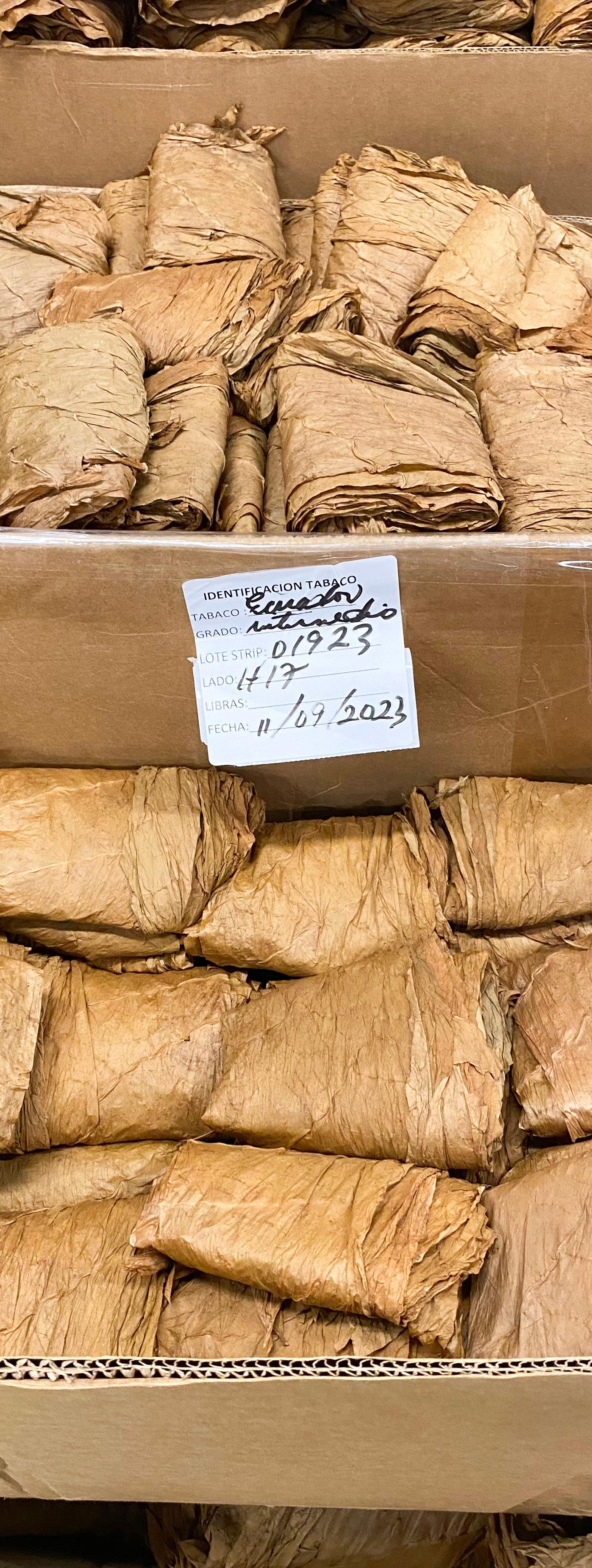
as a link between the market and the factory, and I presented this information to the Grupo de Maestros. That’s when we would start the process of creating new blends,” he explains.
Pedro Ventura emphasizes that designing a new blend starts with understanding the characteristics of the tobaccos because without that knowledge, “you could have a beginner’s luck, combining tobaccos and making a good sample, but that will happen once, if it happens at all.”
“So, the first thing is to know the characteristics of the tobaccos, and that takes time. Unlike the habano world, which uses tobacco from a single origin, we use tobacco from 11 different origins, for example. So, the only way to get anywhere is by really understanding the characteristics of the tobaccos,” he points out.
The Grupo de Maestros –he mentions–employs the technique of tasting tobaccos 100 percent, which helped them develop their palate. “We made some samples when we received tobacco with the wrapper, filler, and binder from the same tobacco lot, and that ultimately made us appreciate the properties of that tobacco. It was one of the ways the whole group used to develop the palate, which allowed us to know from the start which tobaccos to start mixing when we wanted to introduce a product with certain characteristics.”
He says they would make 20 to 30 different blends, smoking them blindly and evaluating them on forms with organoleptic characteristics and technical aspects like the burn and roll. In the end, they would give a score, and the highest-scoring samples would move on to the next round. The process could take anywhere from six months to over a year.
Based on this knowledge of tobaccos, he continues, it’s also necessary to understand market trends because the current consumer is very different from the one 15 or 20 years ago.
“Before, the consumer wasn’t into strong cigars. They focused on cigars with good flavor and low to medium strength. That has changed a lot, and I can’t make blends I like, but for the person who buys them. Why has this changed so much? Because, before, cigar smokers were older people. You didn’t see a young person, like someone in their 20s, smoking, and today they represent 24 percent of the consumers in the U.S. market, and they seek out cigars with higher strength. There are also people trying to quit smoking cigarettes, and they want that intensity from smoking two or three packs of cigarettes a day,” explains Pedro Ventura.
A master blender, he asserts, must take this into account, because simply having knowledge about the characteristics of tobaccos isn’t enough; it’s also essential to understand what the market is looking for.
“These are the main things needed to create a good blend, in addition to having a good palate and good raw materials. Because without good tobaccos, you can’t make good cigars. So, the processes of planting, curing, and fermentation are crucial for a high-quality product,” he points out.
For Pedro Ventura, the pandemic was like “the perfect storm,” as the demand for tobacco surged by 33 percent. “Stabilizing production as we had it and increasing it according to demand has undoubtedly
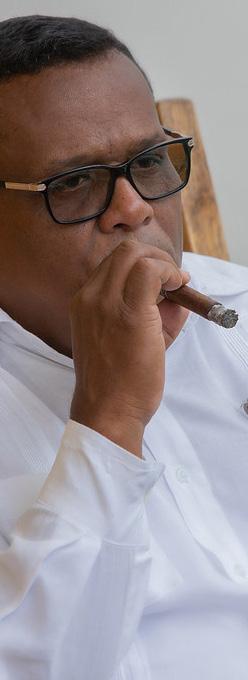
been the biggest professional challenge I’ve ever faced. As the person responsible for production, obviously all eyes were on me, saying we had to produce and also manage the staff under such difficult conditions as those during the pandemic. It was a tough time, but we came out stronger and became more creative than we thought we could be. That was the positive side of the pandemic.”
In fact, the demand in 2021 was so high that this period has been referred to as the mini tobacco boom. “We produced 45 million cigars that year, something nobody expected,” he says.
He recalls that, like all major companies, Tabacalera de García had to close its factory during the lockdown months. When they were able to reopen, “we couldn’t bring back all the staff. We had to gradually increase the workforce due to social distancing. We had to get very creative, even launching a rotating shift system, where one group would work for four days and then go home, and another group would come in for four days to maintain half of the usual staff.”
For Pedro Ventura, the pandemic represented a turning point for the industry and how it interacts with the market.
“During the pandemic, I did more than 20 live sessions with journalists, bloggers, and enthusiasts. I had one almost every week with people from different parts of the world. There was a closer relationship, intermediaries were eliminated in the process of creating a cigar, and smokers had greater access to information.”
Another effect of the pandemic was the full incorporation of women into the tobacco consumer market. “It’s incredible how many women are smoking now
around the world, and you can even see this in the local market in the Dominican Republic, something that would have been unthinkable 10 or five years ago. There are even women smoking clubs,” highlights Pedro Ventura.
He believes that the pandemic accelerated the shift in smoking trends, with more young people smoking and more women joining the market. From a business perspective, this demands that the industry adjust more quickly. As a result, the characteristics of their blends are now more aligned with this trend than with the ones they traditionally made.
Thanks to these business strategies, Tabacalera de García remains the number one choice among consumers of mild and medium-bodied cigars, capitalizing on the trend of new smokers as the traditional smoker base shrinks. “So, if you fall behind, you’ll end up being small,” he states.
Pedro Ventura reflects on the main challenges he has faced in his career. “The first was getting into the Grupo de Maestros and earning the acceptance of a group of people with a world of experience, while I was just a young guy coming out of college with no tobacco family background. Achieving the acceptance of that group and getting to the point where they truly accepted me as part of the group was a huge accomplishment, one of the first milestones in my career.”
The second challenge was working in a multinational company with a culture that was not necessarily aligned with a hand-rolled cigar factory, but rather with the world of cigarettes and machine-made cigars. “Being able to deal with that, and making the executives understand that
It’s incredible
how many women are smoking now around the world, and you can even see this in the local market in the Dominican Republic, something that would have been unthinkable 10 or five years ago.
There are even women smoking clubs”
there were things that didn’t necessarily apply to the operation of hand-rolled cigars, was a tremendous challenge.”
Finally, as a master blender, Pedro Ventura advises new smokers that if they want something intense, they should start with a medium-strength cigar to develop their palate and better appreciate the characteristics of different types of tobacco. “That way, they can truly appreciate a good cigar, as they first work on developing and educating their palate.”
All that training of the palate and sense of smell in the creation of cigar blends is part of an ongoing education process, which even shares notable similarities with the gastronomic world. “In the end, we’re chefs who, instead of food, create cigars.”

What is the best cigar? The one that sells:
José Javier Elmúdesi Rodríguez is the Industrial Affairs Manager at Tabacalera de García. He is an Industrial Engineer and holds a Master’s in Business Administration. He was born in Santo Domingo, Dominican Republic, in a family with strong Catholic values and a deep sense of family unity.
Although his family doesn’t come from a tobacco tradition, Javier was always somehow involved with tobacco.
“My grandfather smoked cigars. He smoked La Aurora cigars and chose them carefully to ensure none had holes or tobacco worms. He would take 20 cigars and smoke them throughout the week, but he always had his cigar with him and loved to smoke,” he recalls.
His first direct contact with cigars came when he joined Tabacalera de García in 1996. His wife’s mother was a close friend of the factory’s manager at the time, José Seijas. “They had a very close relationship, and she passed my resume to Mr. José when they were looking for a manager for an operation at the lipstick case assembly factory here.”
At the time, the owner of the factory also owned the Revlon cosmetics brand, and they used the factory workforce to assemble lipstick cases. “It was a very clean operation, and we assembled up to 40 million cases in a year.”
His first cigar was given to him by José Seijas, with whom he worked very closely. “José Seijas took a liking to me from the very first day I entered. In fact, I worked in an office near his, in the same building, and in the mornings, we would attend meetings where everyone smoked. He saw me take a cigar, and came to my office to suggest that we do something, knowing I wanted to start smoking. He told me to begin with a Vega Fina Regular, which came out in 1998.”
“He told me to smoke that cigar for a while because he didn’t want me to be discouraged by a stronger cigar, and that I should gradually work on my palate. I took that cigar from José and smoked one every morning with coffee, and another in the afternoon. Little by little, I started increasing the strength and complexity, and I believe that’s the right way to start smoking cigars,” he explains.
Javier Elmúdesi says he was fortunate to have had the best mentors in the cigar industry since he started working in the primary tobacco leaf department, involved in the leaf conditioning processes, where he met George Herschel and Nick Van Holden, who at the time were the buyers for Consolidated Cigar, and Julio Aponte, who worked for over 50 years buying tobacco.
He claims that those years were very important because working in the fields and with tobacco suppliers is an experience that lays the foundation for understanding this wonderful industry. He believes it’s the right starting point for anyone entering the field: to begin with tobacco as a leaf.
Once in the tobacco area at Tabacalera de García, he worked on testing the blends of cigars that would be launched to the market. “We smoked almost daily, and in any meeting, we would try a blend and discuss what could be improved. Anyone in the group could bring a new blend or a better version of one we had smoked, and in those meetings, we would talk about how to enhance it. This created an experience and knowledge of using different types and grades of tobacco for different smoking experiences.”

This was the foundation for what would later become the Grupo de Maestros, working closely with Néstor Rodríguez, Pedro Ventura, Víctor Ávila, José Seijas, Cándido Rosario, and Carlos Travieso.
“It became our responsibility to keep smoking, not only to ensure the consistency of the brands we had to maintain but also because the market demanded new things, innovations. Today, 30 percent of what is sold in a year is innovations, and we must always be looking for something new for the consumer,” he emphasizes.
Becoming a master blender is a yearslong task that involves trying countless variations of tobacco to educate the palate, he mentions.
“Here, we have always worked with 13, sometimes 14 different origins for the filler, six to seven for the binder, and up to 14 origins for the wrapper. So, when I mention an origin, for example, a Dominican tobacco, there are three varieties of seed, four different regions, and four different positions on the plant. Only by smoking you can know that a cigar has 33 percent Dominican Piloto tobacco, 30 percent Nicaraguan, with some Peruvian and an Olor Domincano binder,” he explains.
Javier Elmúdesi gives an example of a special edition cigar produced for a family with whom they had worked for many years. “We planted for this edition, with time and proper fermentation, also using their own Piloto de la Canela. We ended up with a cigar that didn’t resemble any other cigar. This is the kind of work we do when the market asks for innovation.”


He explains that creating a new blend can take up to nine months, especially when you have a high-quality tobacco inventory like at Tabacalera de García.
“Back then, we had a minimum of 24 months of tobacco leaf inventory for all those references, and not every industry could have that; it was a huge advantage. We were like children playing with a lot of toys. That’s what truly allows the development of blends.”
The pandemic changed many things worldwide, and the tobacco industry was no exception. Javier Elmúdesi highlights the transformation in production and promotion processes, which included adopting technology, holding meetings and smoking sessions remotely, and alternating shifts in the factory due to the required social distancing.
Moreover, it was a major challenge, as while cigar production had to be reduced, demand skyrocketed. For the world’s largest factory, it was a real challenge, having to double efforts to hire additional staff to meet the growing market.
In this regard, he points out that Tabacalera de García serves two markets: the United States, where 60 percent of its production goes, and the remaining 40 percent is sold worldwide.
He believes that the U.S. market will increasingly focus on cigars of higher complexity and strength, particularly among younger consumers. Furthermore, American smokers are knowledgeable and demand consistency between the price and quality of cigars.
At the same time, he notes that the international market will also move toward cigars of greater complexity.
“But in the end, I believe the smoker will recognize, just like with wine, when a cigar has well-fermented and well-aged tobacco. The market is becoming more and more educated,” he adds.
Javier Elmúdesi emphasizes that the company is prepared to manufacture what the market is asking for. “What’s the best cigar? The one that sells. And the one that sells at a reasonable price,” he concludes.


▶CLASSIFICATION: Bourbon.
▶COMPANY: Breckenridge.
▶DISTILLERY: Breckenridge Distillery.
▶ABV: 43% (86 proof).
▶AGE: NAS (No Age Statement).


Michel I. Texier
According to the label, it is aged for a minimum of 2 years in new toasted American oak barrels. According to the website, it is aged between 2 and 3 years at a minimum. In statements from the master distiller, Jordan Via, except for the original release, subsequent versions are offered with a minimum of 3 years of aging.
MASHBILL: 56% yellow corn, 38% green rye, 6% unmalted barley.
COLOR: Fresh tea, medium intensity.
According to Jordan Via, the water used by the distillery is key and comes from the municipal supply of Breckenridge: essentially, naturally melted fresh snow rich in minerals. Breckenridge is located 9,600 feet (2,926 meters) above sea level in the Colorado Rocky Mountains.
NOSE: Cinnamon, spicy rye, oak, and vanilla with just the right amount of barrel toast notes.


PALATE: The rye spices, cinnamon, and pepper contrast with the oak, vanilla, and honey. It’s well balanced. Although it may seem understructured at first glance, its flavor is much more complex than expected, which is emphasized by its alcohol content.
FINISH: Medium finish, with a fair amount of notes originating from the toasting. The flavors really stand out and leave an excellent aftertaste. It gives the impression of being a higher-proof bourbon than it states with its ABV and competes very well with other labels above 45% ABV (90 proof).
COMMENTS: When drinking, it doesn’t seem to present unique characteristics, falling into the traditional range of what you might expect from a bourbon. It’s a familiar, complex flavor that’s hard to distinguish in a blind tasting. Its story is somewhat convincing, as the distillery claims to use snowmelt rich in minerals, which speaks to a notso-secret “secret” ingredient. Then there’s its early age of 2 to 3 years, which I would never guess just by the taste. I consider it a top-tier traditional bourbon that seems to have more barrel years than stated and, at a price point of $50 or less, should be on the shelf of any collector.


Flor de Caña 12 Centenario

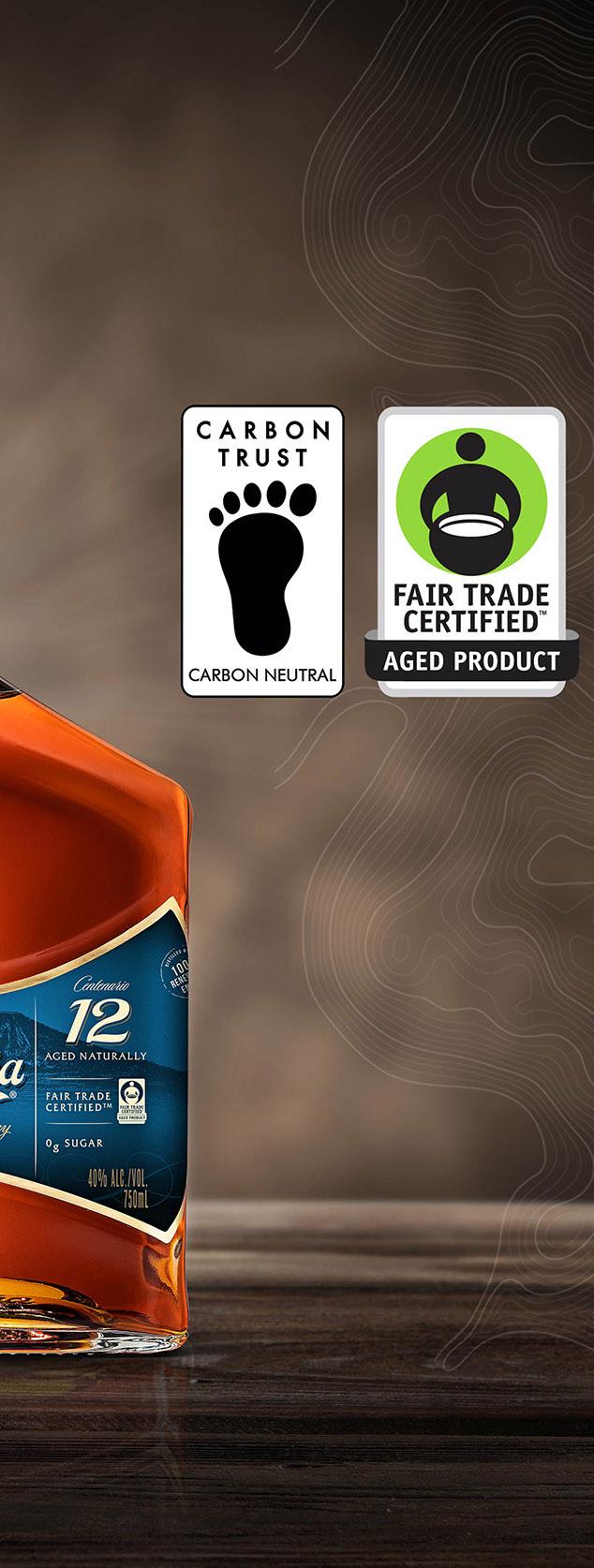
Diego Urdaneta
In 1890, Francisco Alfredo Pellas established a sugar mill in San Antonio, Chichigalpa, Nicaragua. Remarkably, the Pellas family has maintained ownership and management of the business for five generations. Flor de Caña is one of the most recognized rums in the world and one of the biggest in Central America. Most recently, they’ve come to be recognized by their green standards and lessening of carbon footprint when making their rums.
According to its website, the rum is produced from molasses, which come from the same sugar cane that is planted around the distillery. The molasses is fermented and later distilled five times in a column still. The spirit is then aged in ex-bourbon casks.

Though the bottle clearly states 12 years old, the number is actually an average of years, with minor variations in each production. It is bottled at 40% ABV.
▶Distillery: Flor de Caña.
▶Name: 12 Centenario.
▶Brand: Flor de Caña.
▶Origin: Nicaragua
▶Age: 12 years (average)
▶Price: $32.00
Nose: Caramel, oak, black pepper, orange peel, vanilla and cardamom. After a few minutes, some scents of dried fruits (walnuts and pecans), chocolate and raisins.
Palate: Balanced notes of caramel, oak, green pepper, vanilla, cinnamon, clove and allspice. Also some orange peel and marmalade.

Retrohale/Finish: Some dark chocolate, coffee and cola.
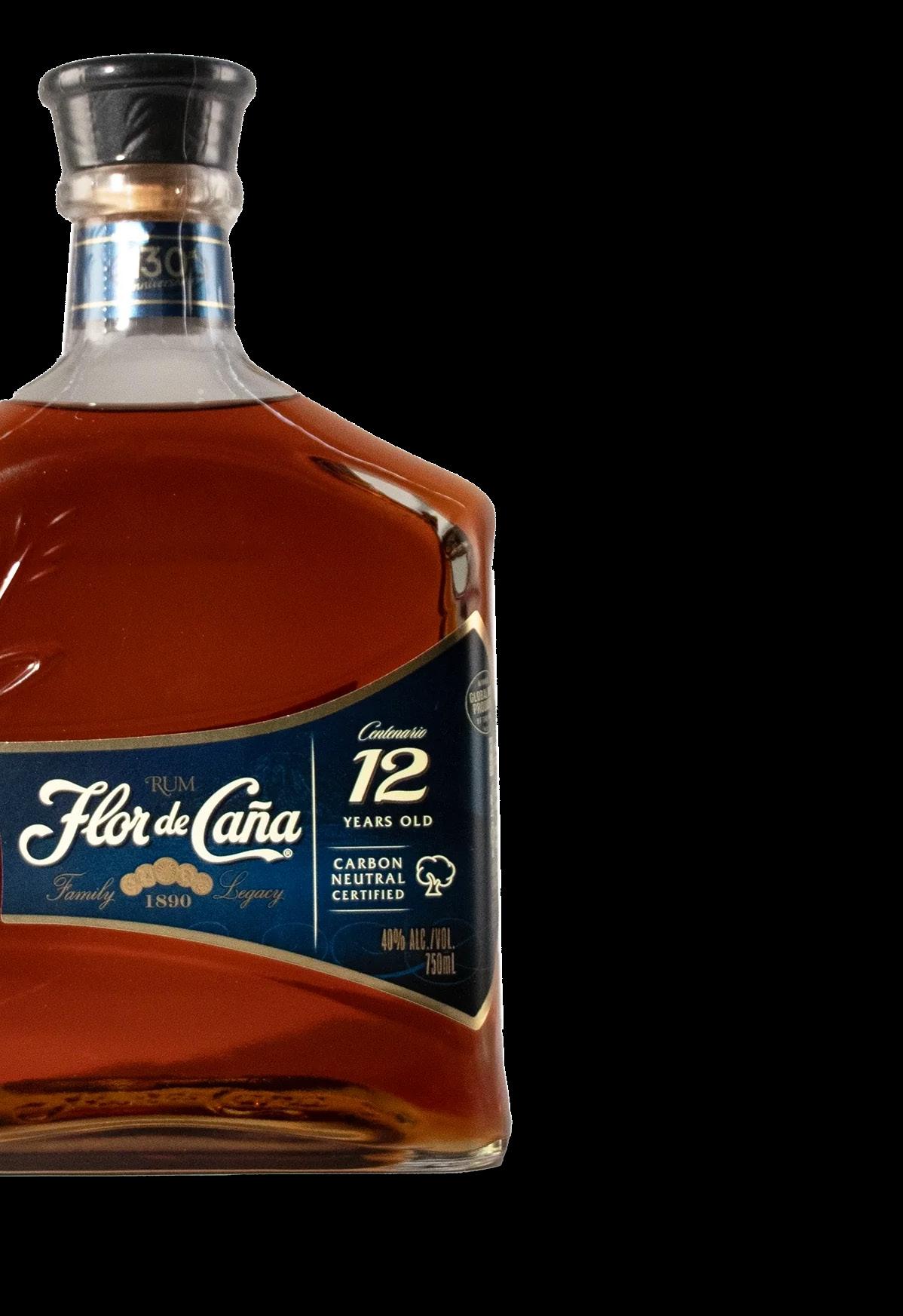
Rating: 8 on the t8ke scale.
Conclusion: I usually have issues when I know I’m being lied to. If a bottle states 12 years old, I won’t expect to read about it being a 12-year average or that the liquid isn’t 12 years old. I’d rather it not have an age statement. On the other hand, I find it very positive how Flor de Caña does not seem to add sweetener to their rums and this 12 “year” certainly doesn’t feel sweetened, though many of the scents remind me of sweet things. That’s a great thing when having it, as it won’t make you too thirsty and doesn’t seem to hide flavors. It’s as dry as I’d expect a younger rum, but very complex, more than I’d expect from other rums in this price range. It’s a great rum that you should definitely try.
